Xiaomi A Pro 2026 is a television that at first glance does not reveal significant changes compared to its predecessor. Someone might even think it is simply a copy of last year's model with a different label. And there is some truth to that, as the main new feature, or rather the only noticeable difference, is the 120 Hz mode at lower resolutions. Credit must be given to Xiaomi, as this addition really does make a difference – it is not a solution for professional gamers, but a nod towards those looking for a smoother image during casual gaming. This is where the A Pro 2026 can shine – with a simple yet clever idea that distinguishes it in the “super-budget” segment. Unfortunately, when we begin to look at the television more broadly, excitement quickly dwindles. Even though the year has changed on the calendar, most of the issues known from the A Pro 2025 have remained – the system can still experience strange stutters, and the occasional errors can be quite irritating. Additionally, there is a lack of any serious tools for digital image processing, which worked quite decently last year. As a result, there are many limitations in the design that the competition at a similar price point is already attempting to mask. In terms of picture quality, we will not deceive you either. A brightness level of 200–300 nits does not stand a chance against more demanding materials. Yes, with simpler streaming content, one can manage to watch something, but with high-budget productions, it is immediately evident why the television costs what it does. The impression of watching a flattened image stripped of details accompanies us almost every time. And here we get to the crux of the matter. The Xiaomi A Pro 2026 is a television for those who really require very little. As a daily screen for series, news, or YouTube – it works quite well, especially thanks to its operating system, which is GoogleTV. Also, if someone is looking for budget equipment and additionally would like a taste of smoother gameplay in games due to the 120 Hz mode, they may even be satisfied. But anyone expecting at least average picture quality, a stable system, and proper functionality will quickly notice that there are other budget models on the market that simply perform better.
- Matching (Score)
- Our verdict
- TV appearance
- Where to buy
- Contrast and black detail
- HDR effect quality
- Factory color reproduction
- Color reproduction after calibration
- Smoothness of tonal transitions
- Image scaling and smoothness of tonal transitions
- Blur and motion smoothness
- Console compatibility and gaming features
- Input lag
- Compatibility with PC
- Viewing angles
- Daytime performance
- Panel details
- TV features
- Apps
- Playing files from USB
- Sound
XIAOMI A PRO 2026 vs Xiaomi S Pro 2026
Direct comparison

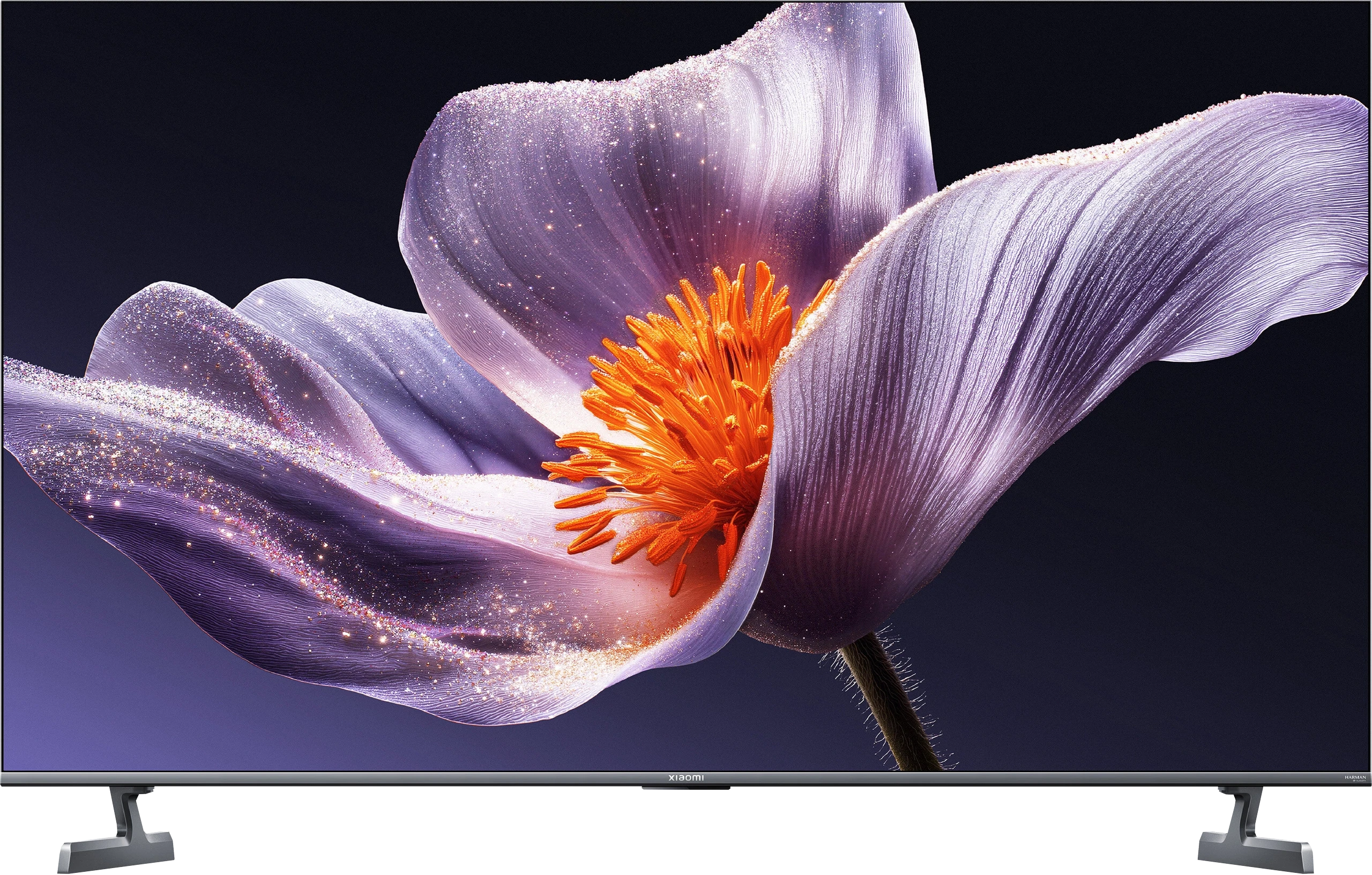
Panel type: LCD VA
Resolution: 3840x2160
System: Google TV
Model year: 2025
Complete the survey to find out the result

Resolution: 3840x2160
System: Google TV
Model year: 2025
Complete the survey to find out the result

Overall rating
5.6
7.2
Movies and series in UHD quality
6.0
6.7
Classic TV, YouTube
5.7
6.3
Sports broadcasts (TV and apps)
4.7
6.4
Gaming on console
6.2
7.7
TV as a computer monitor
2.0
8.6
Watching in bright light
4.9
7.4
Utility functions
6.1
7.2
Apps
9.6
9.6
Sound quality
5.0
7.1
Complete the survey to find out what fits your preferences
Advantages
VA matrix with good native contrast and decent blacks
Support for Game Boost mode at 120 Hz in 1080p and 1440p
Low input lag in 120 Hz mode
Google TV – a vast selection of apps and services
Wide colour gamut coverage (approx. 94% DCI-P3)
Decent colours after SDR mode calibration
Support for popular audio formats (Dolby Atmos, DTS:X)
Large, clear remote with a numeric keypad – convenient for seniors
Good black levels and contrast (SDR)
Very high peak brightness (great for a bright living room)
Complete package for gamers (144 Hz panel, HDMI 2.1, VRR)
Extremely low input lag in SDR mode (below 10 ms)
Surprisingly good, powerful sound (Branded by Harman Kardon)
Support for Dolby Atmos and DTS:X
Rich Google TV system (with AirPlay and Chromecast)
Proper compatibility with PC (clear fonts and 288Hz mode)
Outstanding value for the offered specification
Disadvantages
Low brightness
No real support for HDR10+ and other more advanced HDR formats (e.g. Dolby Vision)
Significant limitations when working with PC – lack of chroma 4:4:4, strong dithering, poor font readability
Poor viewing angles (typical for VA)
Clunky construction, legs mounted in plastic with screws
Weird system issues – stuttering, errors with Miracast and sound switching
Upscaling and digital image processing are practically non-existent
Very weak sound, virtually no bass (we felt it performed worse than the "2025" model)
Local dimming algorithms practically do not work in HDR content
Useless Dolby Vision Gaming mode (input lag approx. 100 ms)
Poorly implemented HGiG mode
Highly visible banding (colour banding) in dark scenes
Very poor upscaling and digital image processing
Google TV system can "struggle"
Our verdict
Is it worth buying the Xiaomi S Pro 2026? The answer to this question is quite complicated. Let's start with what is really great about this television. First of all, the Xiaomi S Pro 2026 has an excellent price-to-specification ratio. We get a Mini LED panel with very high brightness that performs exceptionally well in a sunlit living room. Additionally, it has a fast refresh rate of 144 Hz (and even 288 Hz) and a full package for gamers: two HDMI 2.1 ports, support for VRR, and remarkably low input lag (below 10 ms). If we mainly watch "regular" content and play games, this is truly a fantastic screen. Even the built-in 30W speakers are surprisingly good and support Dolby Atmos. Unfortunately, there is also a second, very problematic side to this model. In short: the software. We have the impression that Xiaomi has provided us with excellent "parts," but could not make them work together correctly. The biggest issue is the HDR mode – the primary reason for buying a television today. For unknown reasons, the television in HDR mode (HDR10, Dolby Vision) does not manage its dimming zones well. As a result, the black that should be deep becomes gray or navy blue, like in a standard LCD television. There are also other software faults such as the terrible implementation of HGiG or the fact that the Dolby Vision mode for gamers is useless due to the enormous input lag (100 ms). Additionally, the television has very poor capabilities for digital image processing. So how can this be summarised in terms of price? In its price range, the Xiaomi S Pro 2026 crushes the competition in terms of specifications. Other televisions at this price point are usually basic LCD models without dimming and often only with a 60 Hz panel. The question is therefore: what is more important to you? If you are simply looking for a very bright and inexpensive television for watching TV during the day and gaming, and you are willing to calibrate it – you will be very satisfied with it. However, if you are looking for a television to enjoy stunning HDR in films and games right out of the box, you will be terribly disappointed with this model. In that case, in our opinion, it is better to pay a bit extra for a basic OLED television or a more refined Mini-LED model from the competition.
TV appearance
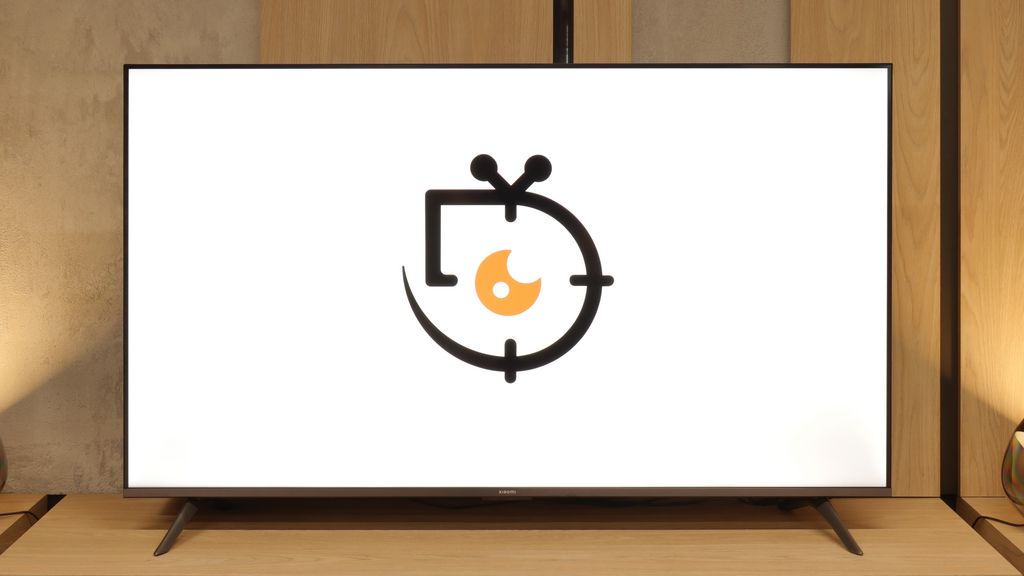

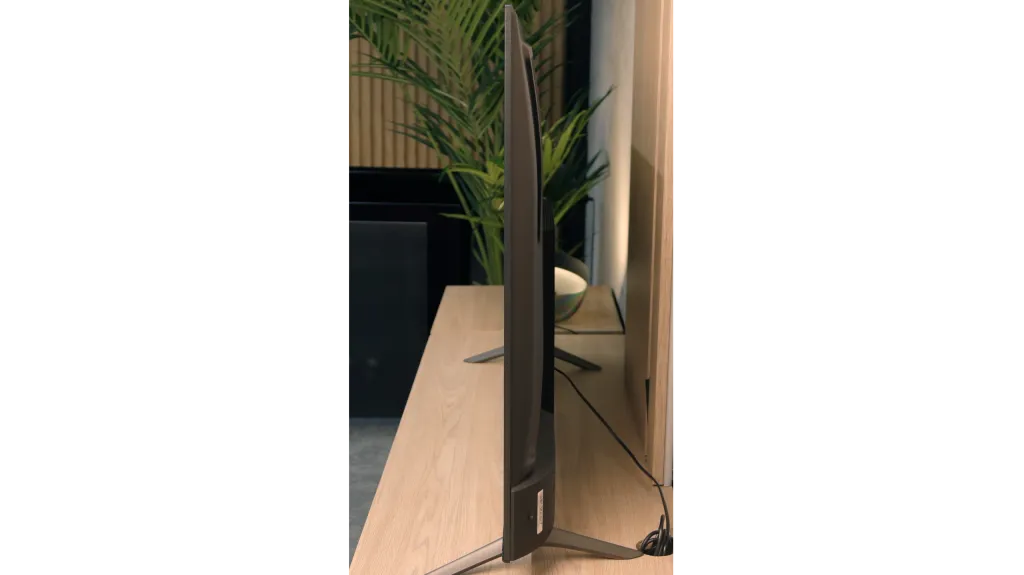
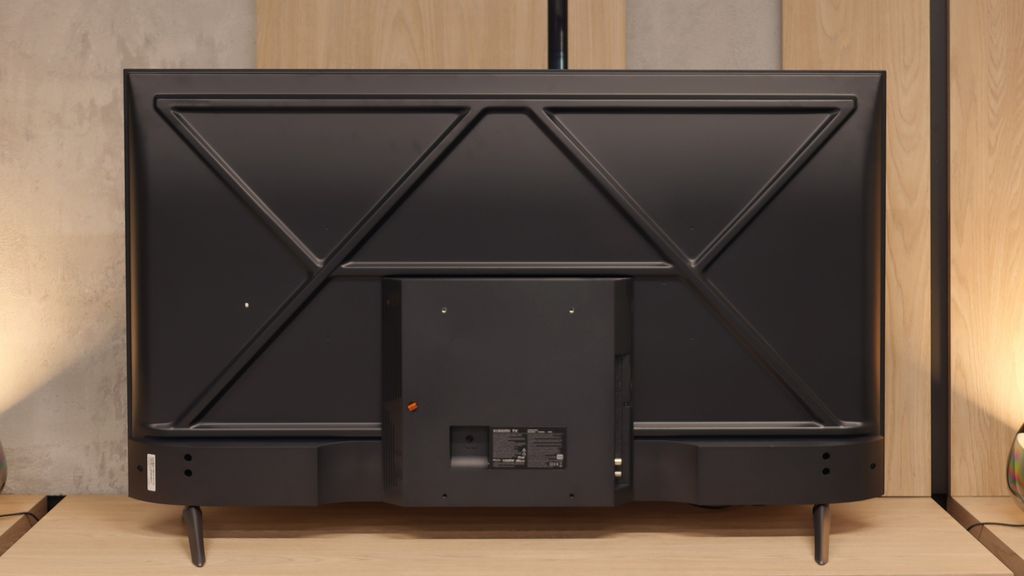




Contrast and black detail
6.1/10
7.4/10
Local dimming function: No
Local dimming function: Yes, number of zones: 532 (28 x 19)
Contrast:

Result
5,000:1

Result
6,550:1

Result
7,300:1

Result
6,600:1

Result
4,900:1

Result
1,001,650:1

Result
52,600:1

Result
17,900:1

Result
17,200:1

Result
10,150:1
Halo effect and black detail visibility:


One of the biggest advantages of even a budget model like the Xiaomi A Pro 2026 is the use of a VA panel. It is responsible for quite a decent contrast, which in our measurements oscillated around 5000:1 – 7000:1. On the screen, this translates to a stable image with a fairly deep black – something that is difficult to find in competitive models with an IPS panel without local dimming. Xiaomi has also added a feature for global dimming of the entire panel. It sounds good, but… we advise you to turn it off immediately. Why? Because the screen begins to behave very strangely in darker scenes – sometimes it dims so much that practically nothing is visible, while at other times it brightens so much that the already dark blue black turns into a bright blue. At that moment, we felt as if the television was simply damaged. Fortunately, without this feature, the contrast looks really solid. It is definitely not on the level of advanced televisions with local dimming, but in its price range, it will comfortably satisfy most users – especially if you are not watching in a completely dark room, but have at least a little light in the background, which effectively masks the imperfections of the "blue black".
Let's get to the point, which is what is most important in the Mini LED panel: black levels and contrast. The Xiaomi S Pro 2026 is built on a VA matrix, which already promises deep blacks from the start. Adding to that is the Mini LED backlighting with a very large number of local dimming zones. In the 65-inch variant we tested, we counted as many as 532. This is a solid number that should provide precise control over the backlighting. It should be noted that this number is proportional to the size – by choosing the smaller 55-inch variant, there will be correspondingly fewer zones, and in larger models, more.
So, how does the black level perform on the S Pro 2026? The answer is complex.
Overall, it is really quite good, and we see a clear improvement compared to the problematic model from 2025. As you can see from our measurement charts, the results are sometimes spectacular. In most of the film scenes we measured in SDR (standard dynamic range), the contrast could be confidently described as very good and even comparable to designs three times as expensive. Well, it could be... and here we come to the paradox of this model. The issue is how the television manages the zones in scenarios other than SDR. As soon as we feed the television a higher-quality signal, such as an HDR series or Dolby Vision from streaming platforms (Netflix, HBO Max or Disney+), something strange happens. We have the undeniable impression that the television suddenly... forgets that it has been equipped with local dimming zones at all. As can be seen in our video below, the black levels in such scenes resemble more shades of dark grey or navy blue. Additionally, there is a subtle flickering of the entire screen. This is a level we would expect from televisions entirely devoid of a local dimming system. It seems that Xiaomi decided to fix one, but key, flaw of last year's 2025 model over the course of a year. And they succeeded – we no longer have the annoying "zone disco", the image is stable. It's just a shame that when consuming content of the highest quality (HDR), this entire advanced system becomes completely useless.
HDR effect quality
4.1/10
6.3/10
Luminance measurements in HDR:

Result
220 nit

Result
248 nit

Result
322 nit

Result
315 nit

Result
326 nit

Result
809 nit

Result
526 nit

Result
1033 nit

Result
469 nit

Result
718 nit
Scene from the movie “Pan” (about 2800 nits)


Scene from the movie “Billy Lynn” (about 1100 nits)


Static HDR10


Dynamic: HDR10+
Dynamic: Dolby Vision


HDR luminance chart:
Xiaomi S Pro 2026
HDR luminance
XIAOMI A PRO 2026
HDR luminance
If you are hoping for a cinema-grade HDR effect in the new Xiaomi A Pro 2026, you better cool your expectations quickly. This television is simply too dim to fully showcase the capabilities of contemporary films or series designed for the highest image quality. Our measurements showed brightness in the range of 200–300 nits, which is more akin to SDR content than ambitious HDR productions. In practice, this means that while most films may look fine, they certainly won't evoke that "wow" effect that other televisions are known for. Fortunately, not everything is lost – we must credit the PFS LED filter used here, which is a solution similar to the quantum dot technology found in QLEDs. Thanks to this, the coverage of the DCI-P3 colour palette reaches about 94%, resulting in vibrant, saturated colours in the vast majority of materials.
When it comes to HDR quality, the Xiaomi S Pro 2026 is undoubtedly a very bright television. On our synthetic measurement patterns, we were able to generate peak brightness of around 1400 nits. This result is not only very good but truly spectacular, considering the price of this model. However, as we always emphasise, for our editorial team, measurements and the experiences from the content viewed on a daily basis - from films and series - are more important. So let's analyse how the Xiaomi performs with film material. The result is, unfortunately, quite mixed. When very bright scenes appear on screen, the S Pro 2026 really shows its full potential and can achieve a real 800-1000 nits in bright elements. Moreover, even smaller objects can "burn" the eyes - in scenes from the film Sicario 2, small metal elements of the helicopter were truly vivid. The problem is that - and here the story comes full circle back to our contrast assessment - in such scenes we cannot count on absolutely cinematic black. In our opinion, this compromise is too great; high visibility of details in bright areas should not come at the cost of such a significant boost to black levels. And although the HDR effect itself can make a stunning impression here, it is essential to remember that when very challenging, mixed scenes appear on screen, we might feel a slight disappointment. Exactly the one we mentioned in the previous paragraph regarding issues with dimming in HDR mode. As a consolation, it is worth adding that the S Pro 2026 has been equipped with an additional PFS filter (similar in function to a QLED layer), which effectively broadens the colour gamut coverage. As a result, measurements showed DCI-P3 coverage reaching up to 94%. This gives us confidence that in most colourful scenes, the image will appear rich and appropriately saturated.
Factory color reproduction
3.5/10
4.1/10


Factory Mode
After calibration


Factory Mode
After calibration
What we saw in Filmmaker mode took us by surprise – and unfortunately not in a good way. The mode advertised as Hollywood standard resembled more of a shop window display. The white balance was shifted towards blue, leading to significant colour mistakes and burnt-out scenes in SDR content. It was slightly better, though still not perfect, in HDR materials. There were also issues there – the colour saturation and the entire palette consistently drifted towards cooler tones, resulting in an image that had more of an artificial, cold tint instead of a cinematic character. In other words: even in Filmmaker mode, which should showcase this television, we got an effect far from expectations.
Of course, all our measurements were carried out in "Film" mode, which is typically the best and most accurate choice we get straight out of the box. It needs to be said plainly: although it is the best mode, it is still very far from ideal. Firstly, the television has a clear tendency to impart a cool, bluish tint to the image – this is due to a poorly set white balance. Additionally, there is the issue of how the S Pro 2026 manages its brightness straight out of the box, which results in an overly vivid image. These two flaws contribute to truly significant colourimetric errors (Delta E). In HDR content, they were able to exceed our anticipated error scale of "10" by twofold (meaning values close to 20). As a reminder – the threshold for perceivable error by the human eye is a Delta E value of around 3. Results at the level of 20 indicate that the image significantly deviates from what the director intended.
Color reproduction after calibration
7/10
7.2/10




Although Xiaomi is not a brand associated with top-tier televisions, it must be acknowledged that even in a budget model like the A Pro 2026, the manufacturer left plenty of calibration settings. After a few adjustments, the SDR image gained a completely new look. Colours stopped drifting towards blue tones, whites took on a more natural quality, and most errors dropped to a practically invisible level. As a result, SDR content looked very good, surprisingly so for this price range.
It was somewhat different with HDR materials. Here, it was immediately evident what we had already mentioned – clipping in bright scenes and issues with balance control. Calibration helped only partly, as the limitations of the panel itself played a role. However, it must be emphasized that for SDR, the television had transformed beyond recognition and in a decidedly positive direction.
So how does the S Pro 2026 perform after our calibration procedure? We have to admit that after calibration, the television becomes a really very pleasant device for watching everyday content. As you can see in the graphs, in HD (SDR) materials, both white balance and gamma values have been brought to nearly perfection. Most importantly, colourimetric errors have become practically unnoticeable to the human eye. In this scenario, the S Pro 2026 is simply an excellent television that, after professional calibration, can provide a lot of enjoyment from watching. However, it is worth clearly noting – our efforts have not helped much in 4K HDR mode. Despite the calibration, the television still interprets the image quite strongly "in its own way," which is clearly visible in the measurement of the EOTF curve (brightness tracking). It’s a bit of a shame, as it shows that the problem lies not in the panel itself, but in the software. Underdeveloped image management algorithms in HDR content can, unfortunately, rule out this television for many more discerning users.
Smoothness of tonal transitions
9.3/10
6.9/10












The television really handles colour blending well, and in most scenes, it's difficult to spot any imperfections. This is most evident in the bright segments of films, where tonal transitions look almost perfect; the image is then smooth and natural. Darker scenes present slightly worse, where characteristic banding can be noticed. Fortunately, this is not a flaw that stands out prominently, and for most viewers, it will remain practically unnoticed.
Let us now turn to the analysis of tonal transitions, that is, the fluidity with which the television can render transitions between closely related shades. In the case of the Xiaomi S Pro 2026, the image that emerges from this is distinctly ambivalent. On the one hand, we have bright gradations. When scenes with a blue sky or other smooth transitions in the light areas of the image appear on the screen, the S Pro 2026 handles them exemplary. They look perfectly smooth, with no visible artefacts.
Unfortunately, the situation changes dramatically as soon as dark scenes take the stage on the screen. Frankly speaking – they look really poor. Instead of a smooth tonal transition in the darkness, the screen very clearly shows the joins of colours and unappealing "stepping" of the gradients. This is very noticeable in darker films or games and can effectively ruin the viewing experience.
Image scaling and smoothness of tonal transitions
3/10
4.5/10
Smooth transition function


Image without overscan on the SD signal


Upscaling and digital image processing in the Xiaomi A Pro 2026 are not among the strengths of this model. One might expect that since the television was not designed to achieve record brightness levels, the manufacturer would focus on a more robust processor and a set of features that would "enhance" lower-quality images. Unfortunately – and here we are also faced with significant disappointment. On the positive side, we can note reasonably good upscaling, which handles HD materials and boosts them up to 4K in an acceptable manner. However, this is where the list of advantages ends. The television does not offer any features that improve tonal transitions or smooth out digital imperfections, so in most cases, we get a raw image, exactly as we deliver from an external source. On a large screen, such a lack of support makes lower-quality materials simply look bland. An additional problem is the phenomenon of overscan. When watching older materials, it happens that part of the image gets cut off, which only amplifies the impression that Xiaomi still has a lot of ground to make up in this category.
Let's start with the issue we raised in the previous paragraph: can the television actually fix the problem of dreadful tonal transitions in dark scenes? Theoretically, yes – in the menu, we find a feature with the promising name "Colour Contour Removal." Well, "theoretically." Unfortunately, in practice, this setting – regardless of which of the three power levels is chosen – yielded absolutely no real results. So we are dealing with a feature that, in practice, only exists in the menu. Moving on to the quality of upscaling (scaling the image from a lower resolution to 4K), unfortunately, we have more bad news for you. The S Pro 2026 performs very poorly at this task. Interestingly, the phenomenon of "overscan" (slight cropping of the image) is not a major issue here. The fact is that the television simply displays a very raw, unprocessed image. Its attempt to upscale the signal to a higher resolution looks simply lacklustre and lacks any form of "intelligent" improvement. There is no denying it – the entire digital image processing is the real Achilles' heel of this model.
Blur and motion smoothness
4.5/10
7.5/10

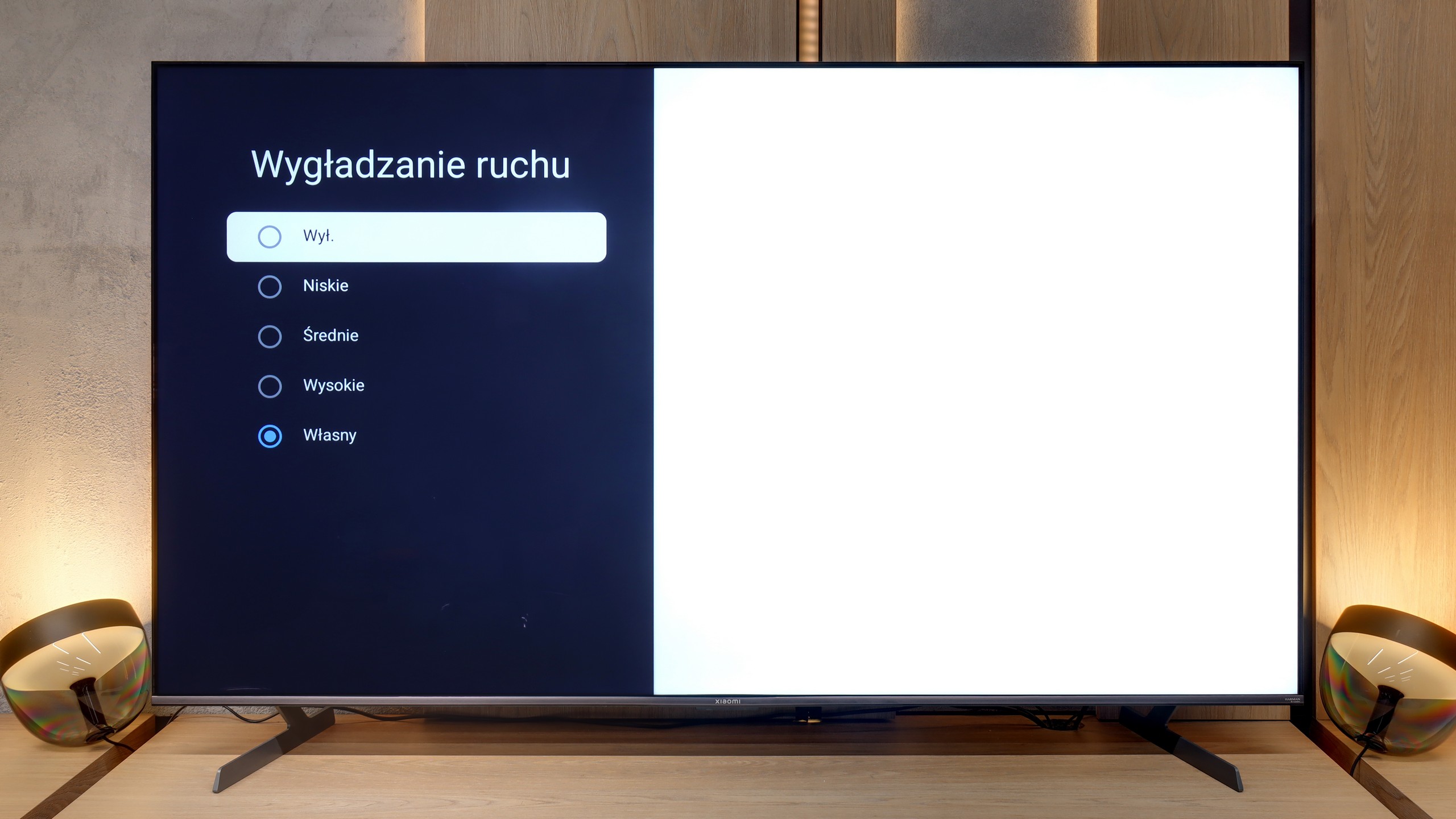
Blur (native resolution, maximum refresh rate):






Smużenie (1440p@120Hz):



Smużenie (1080p@288Hz):



The fluidity of motion in the Xiaomi A Pro 2026 is an interesting compromise that arises from the hybrid matrix used here. At its native 4K resolution, the maximum refresh rate is 60 Hz – sufficient for those who mainly watch films and series. It is precisely with them in mind that the manufacturer has added a motion smoother, allowing users to adjust the image to their own preferences – opting for greater fluidity or leaving more "cinematic" frames depending on the settings.
On paper, the S Pro 2026 specification looks impressive. The television is equipped with a native 144 Hz panel, with the ability to display images at up to 288 Hz in a dedicated gaming mode. These are amazing results, but what interested us most, in the context of everyday use, was how the television handles motion blur and how the image looks at 120 Hz. After all, this is the frequency used by consoles like the PlayStation 5 and Xbox Series X/S, and it is desired by sports fans. Generally, the panel "holds up". The matrix is sufficiently fast to meet these challenges, and objects displayed at native 120Hz fluidity are shown correctly. As for the software, the television is equipped with motion smoothing technology; however, with a key caveat – it works only for input signals up to 60 Hz. This means it is primarily suitable for traditional television, films, and series. Thanks to this, we can adjust the fluidity of the image to our own preferences – from a very smooth, "theatrical" approach to setting the slider to "zero" and maintaining a fully cinematic character.
Console compatibility and gaming features
3.6/10
8.2/10
- ALLM
- VRR
- VRR range48 - 144Hz
- Dolby Vision Game Mode
Yes, high input lag
- Correct implementation of HGIG
- 1080p@120Hz
- 1440p@120Hz
- 4K@120Hz
- Game bar
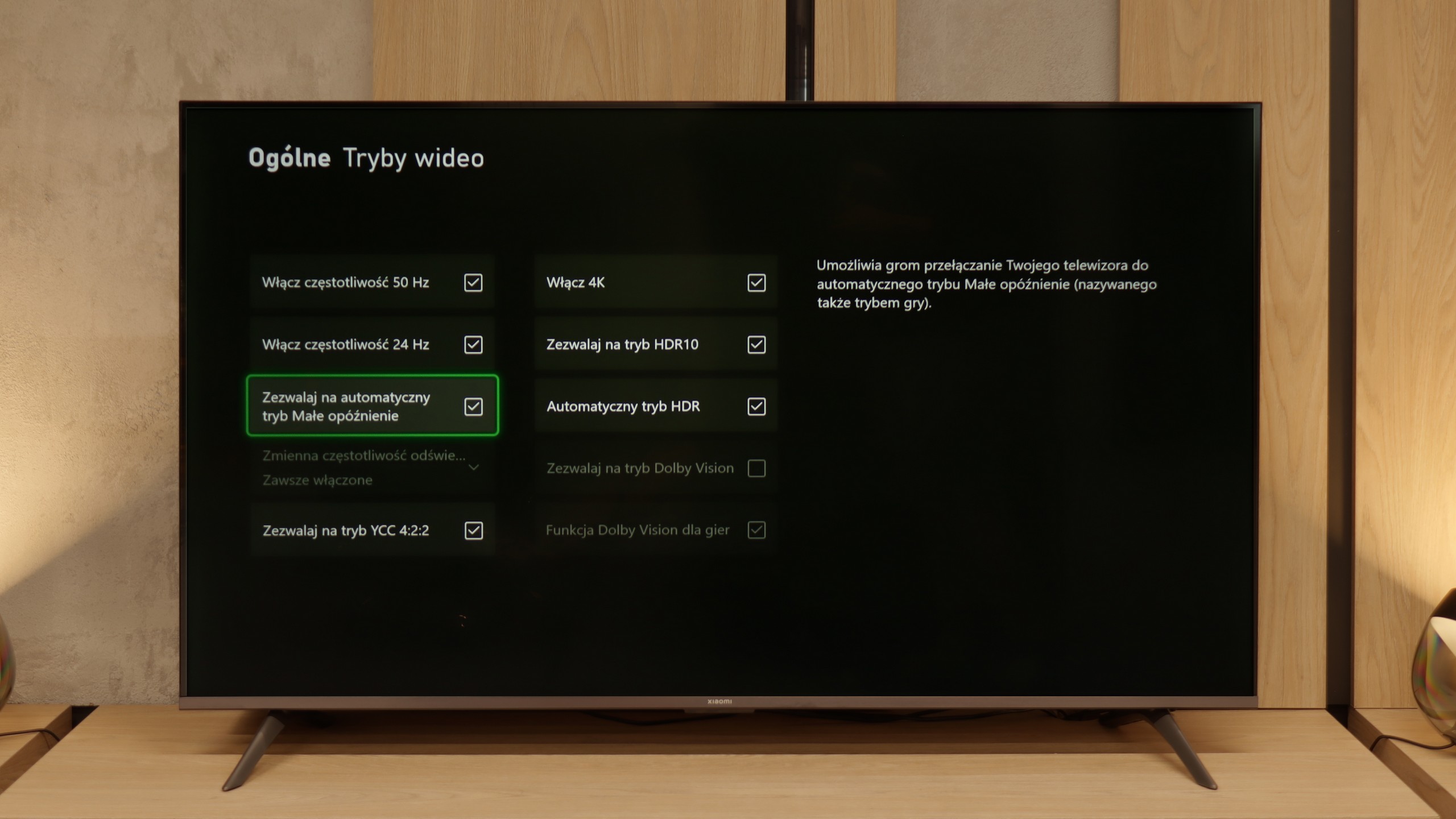
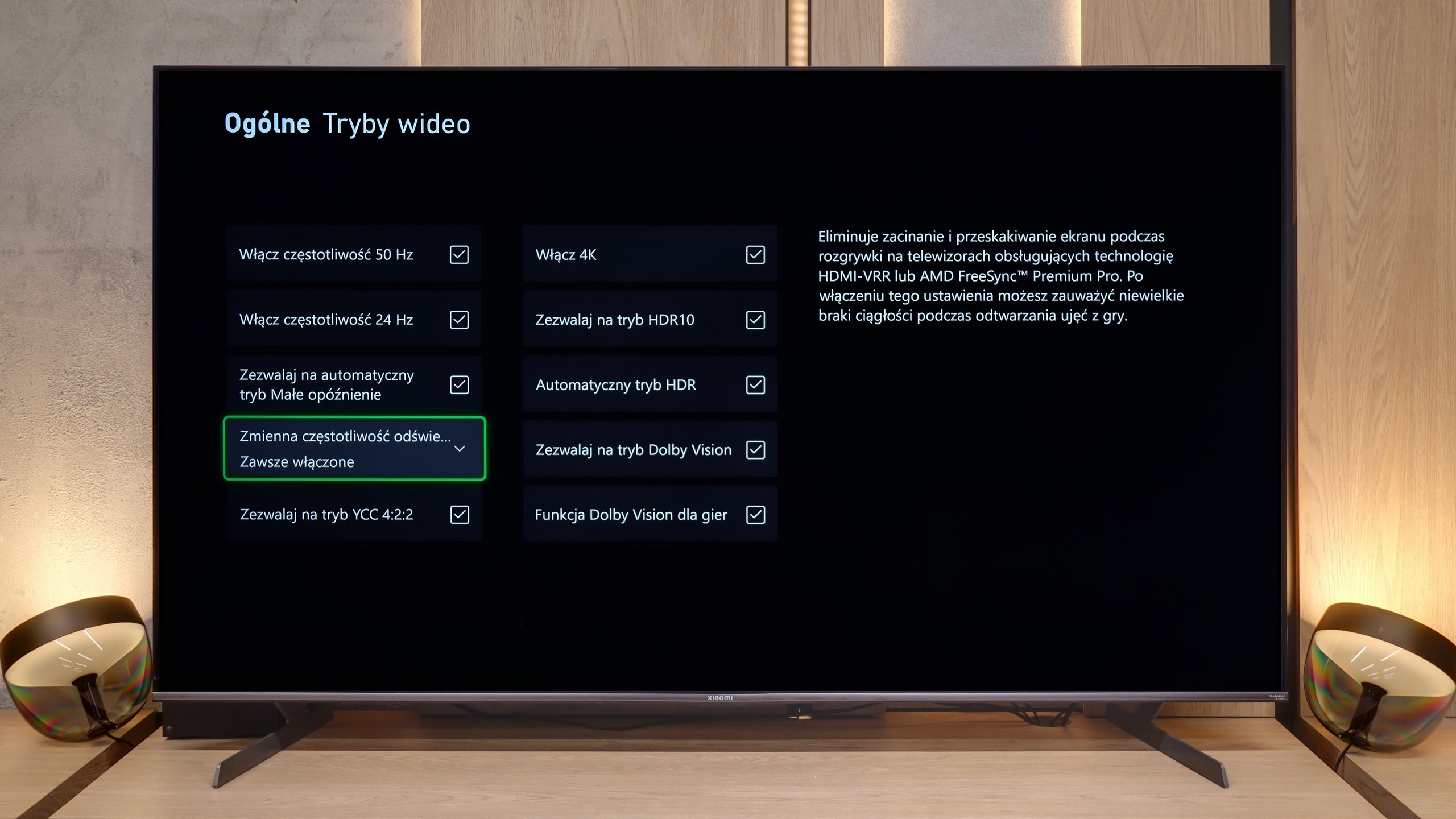
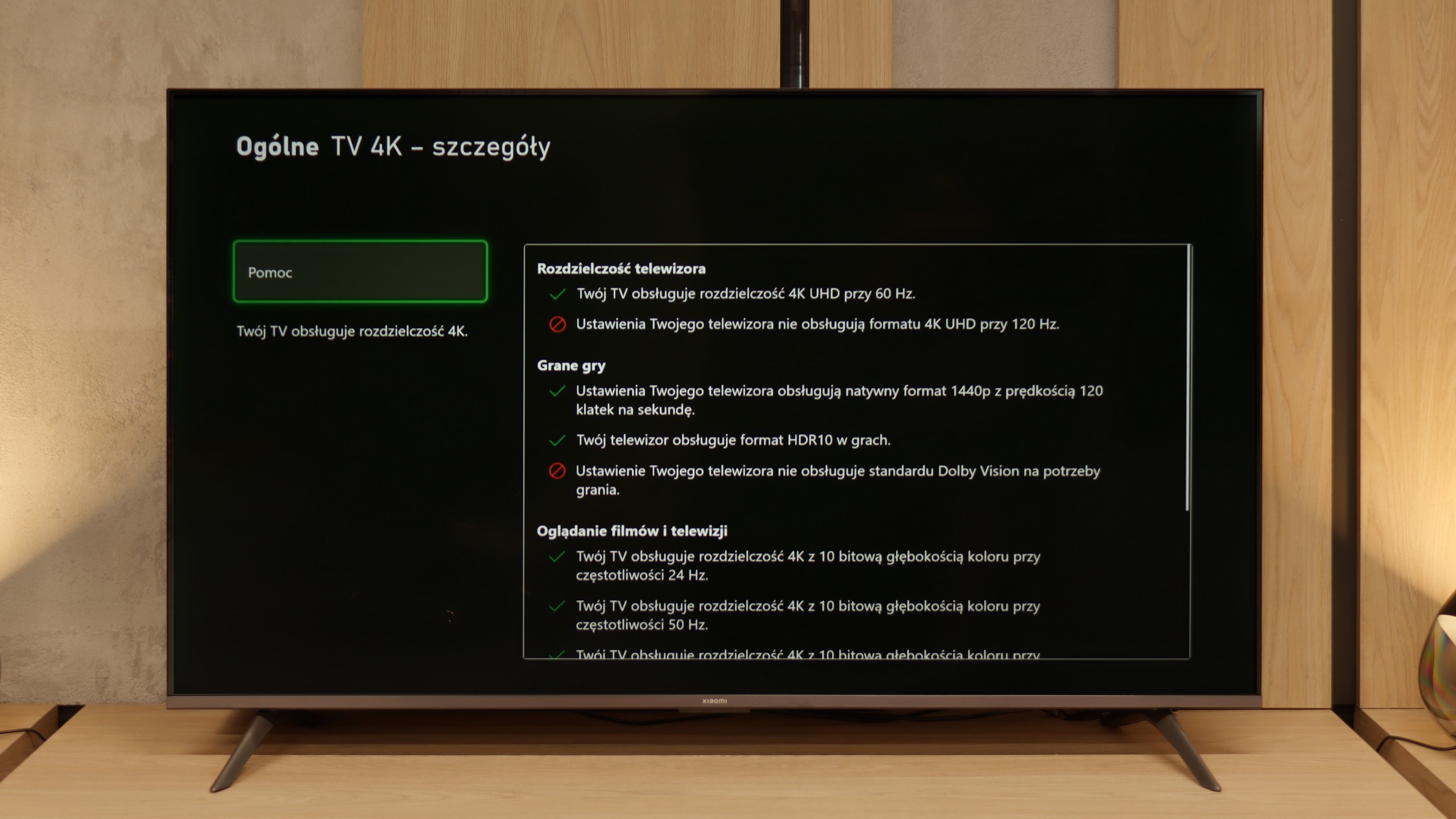
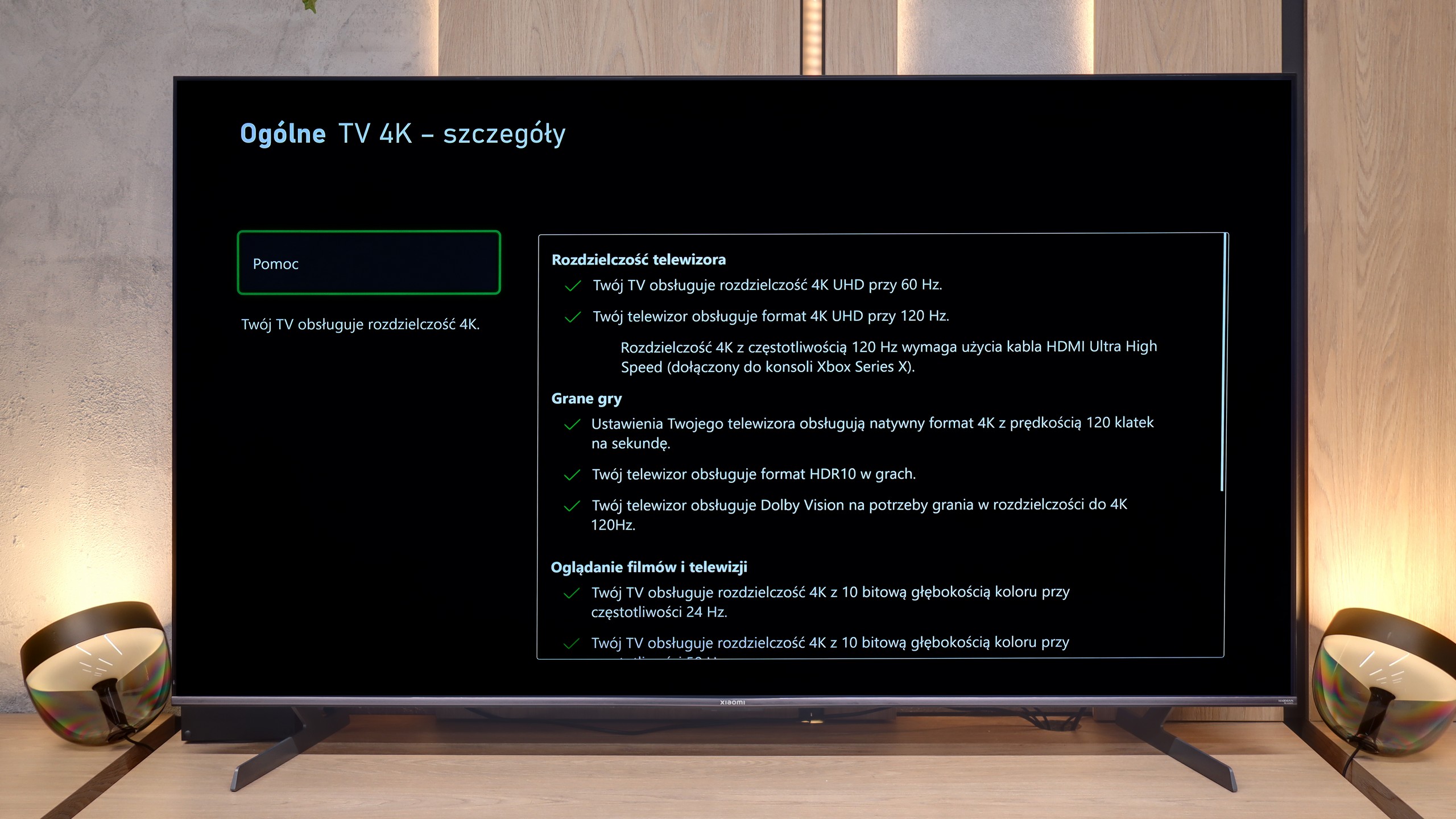
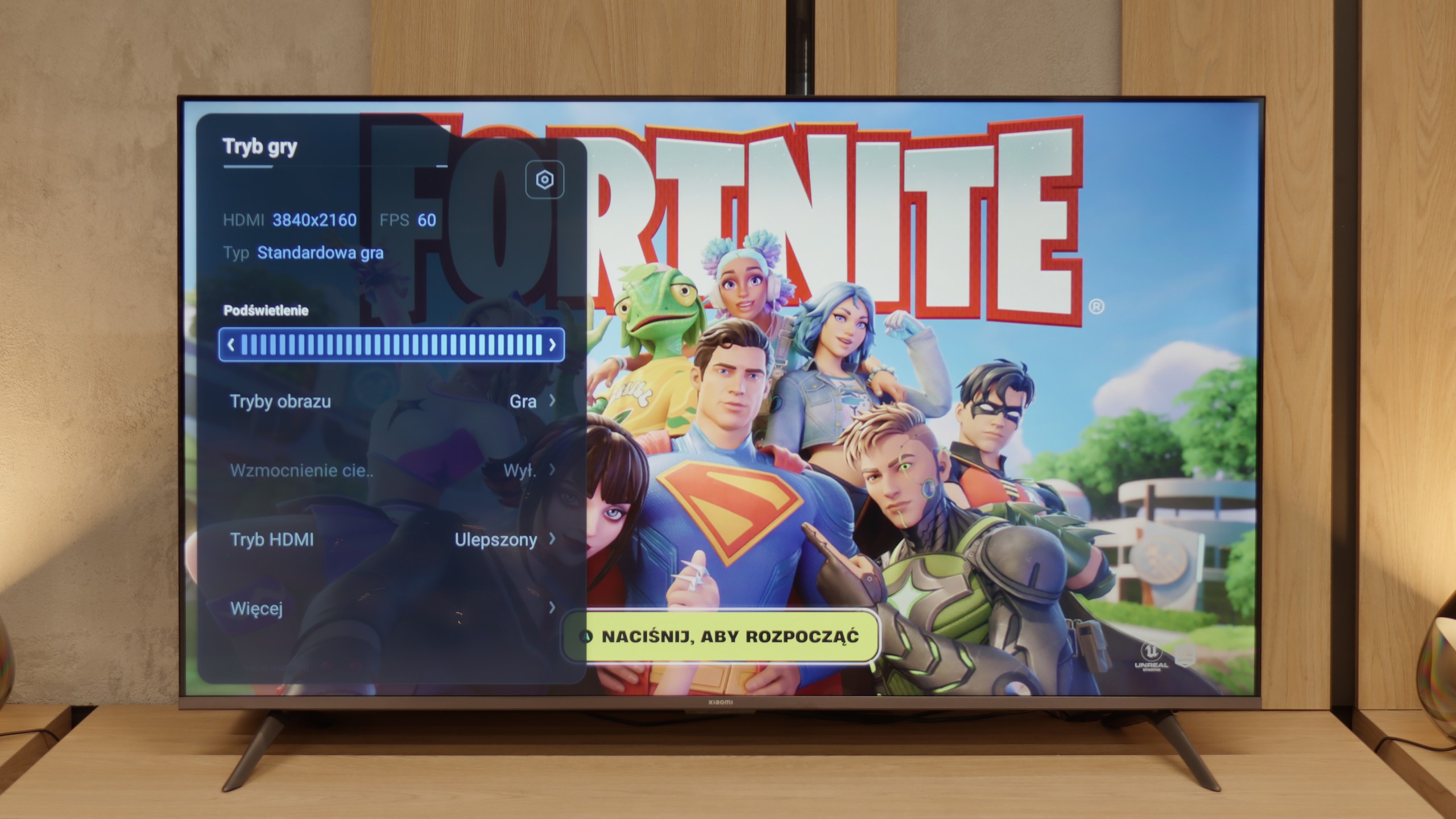


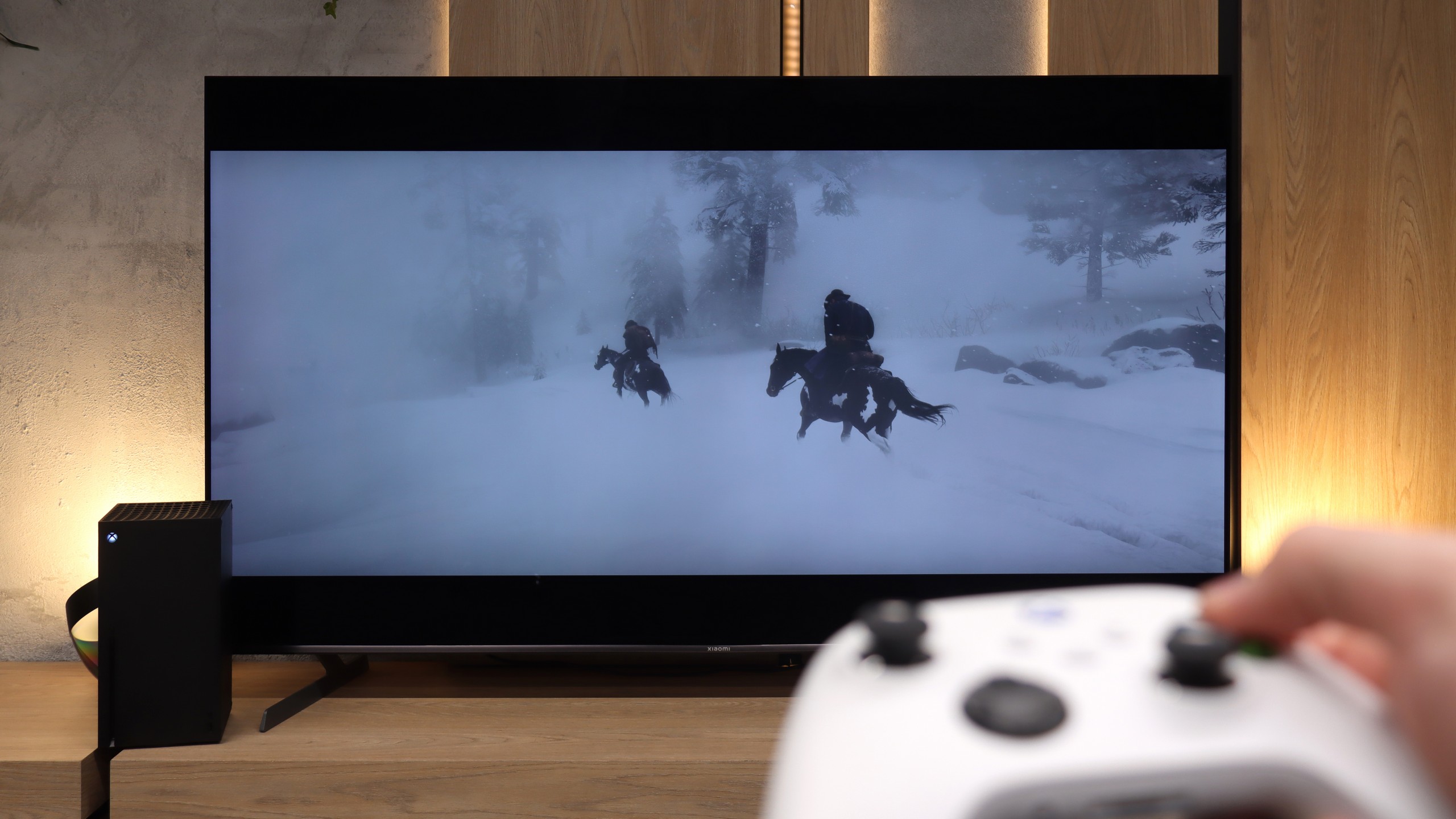
Exactly – since Xiaomi has included the "Game Boost 120 Hz" feature, one might expect that they would follow up with a solid gaming package. Unfortunately, reality quickly dampens this enthusiasm. Aside from this mode (which, it must be admitted, is a great addition in a budget design), we only have a rather odd player panel. It's hard to call it a full-fledged "game bar" – it’s more of a simple overlay on the TV Menu with limited capabilities. And that would be about it. There’s a lack of ALLM, so the TV won’t automatically switch to game mode. There’s no VRR, so you can forget about smooth frame sync. We also won’t find support for Dolby Vision in games or the HGiG format, which are becoming increasingly standard on consoles. In short: besides the Game Boost 120 Hz, which actually allows for a more enjoyable experience at 1080p or 1440p, the Xiaomi A Pro 2026 offers nothing that could particularly attract gamers.
For gamers, the Xiaomi S Pro 2026 is almost an ideal proposition on paper. It is equipped with two HDMI 2.1 ports, which allow us to unlock (although these options are somewhat hidden in the menu) the full package of features: ALLM, VRR and, crucially, the ability to work in 4K at 144 Hz. This last feature should particularly please the owners of powerful PCs. The television also has something resembling a gamer panel – and although it's hard to call it a fully-fledged "Gamebar", it serves its purpose by displaying key information. It’s just a shame that in its default form, it obscures a relatively large portion of the screen.
The biggest issue we have with this model, however, concerns how the S Pro 2026 handles games in HDR mode. To put it bluntly: it doesn’t handle it well at all. Due to the television having a poorly implemented HGiG feature (the HDR tone mapping standard for games), it is very easy to "overexpose" the image during initial HDR calibration on the console. If someone is unaware of this software flaw and follows the on-screen instructions, they will simply set the image incorrectly, resulting in burnt-out details in the bright areas. Another major problem is the Dolby Vision mode for games. While it does work, it generates such a high input lag that it becomes noticeable in dynamic titles. (You can check all our lag measurements in the paragraph below). In summary: Generally speaking, this is a really very good screen for gamers, but with one small caveat. We would rather avoid using HDR mode on it – unless we decide to manually set the brightness bar on the console "by eye", completely ignoring the instructions from the console’s pictogram.
Input lag
9.5/10
8.5/10
SDR
HDR
Dolby Vision
The input lag on the Xiaomi A Pro 2026 is quite decent and definitely not its weak point. The best results were achieved in 1080p@120 Hz and 1440p@120 Hz modes – in those, the television goes below 10 ms, which can easily be described as an outstanding result, and more than sufficient even for the more demanding gamers. The situation changes with 60 Hz content – the input lag then rises to around 25 ms. While these may not be the best figures on the market, they are perfectly acceptable for casual gaming or firing up a console in the evening. Especially since in most cases, it's still worthwhile to enable the 120 Hz mode, which is the most advantageous for gamers.
We move on to one of the most important measurements for gamers, namely signal delay (input lag). Overall, the Xiaomi S Pro 2026 performs excellently here. Generally, in game mode, the lag is very low. With 120 Hz content (from consoles or PCs), we easily achieved results below 10 ms. These are truly outstanding results and, in practice, completely imperceptible for most people, even those very sensitive to lag. Unfortunately, there is one "but" that constitutes the biggest flaw of this model in gaming. This is concerning the Dolby Vision Gaming mode. When this mode is activated, input lag rises to an astronomical level of around 100 ms. At this value, the delay between our movements on the controller (we tested on an Xbox console) and what is displayed on the screen becomes really significant and irritating. Therefore, our recommendation is simple: we absolutely do not recommend using the Dolby Vision Gaming mode on this television.
Compatibility with PC
2/10
8.6/10
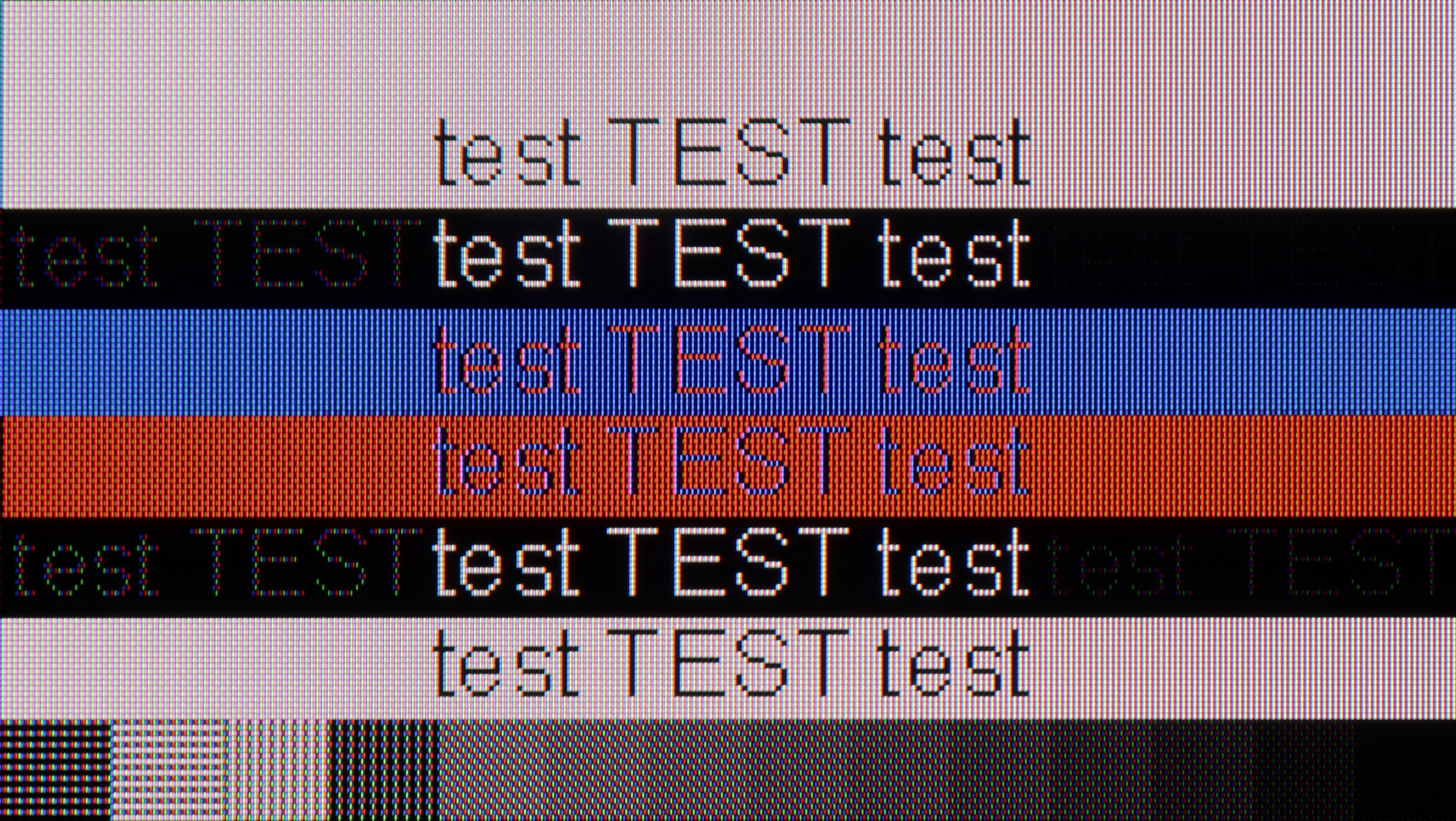
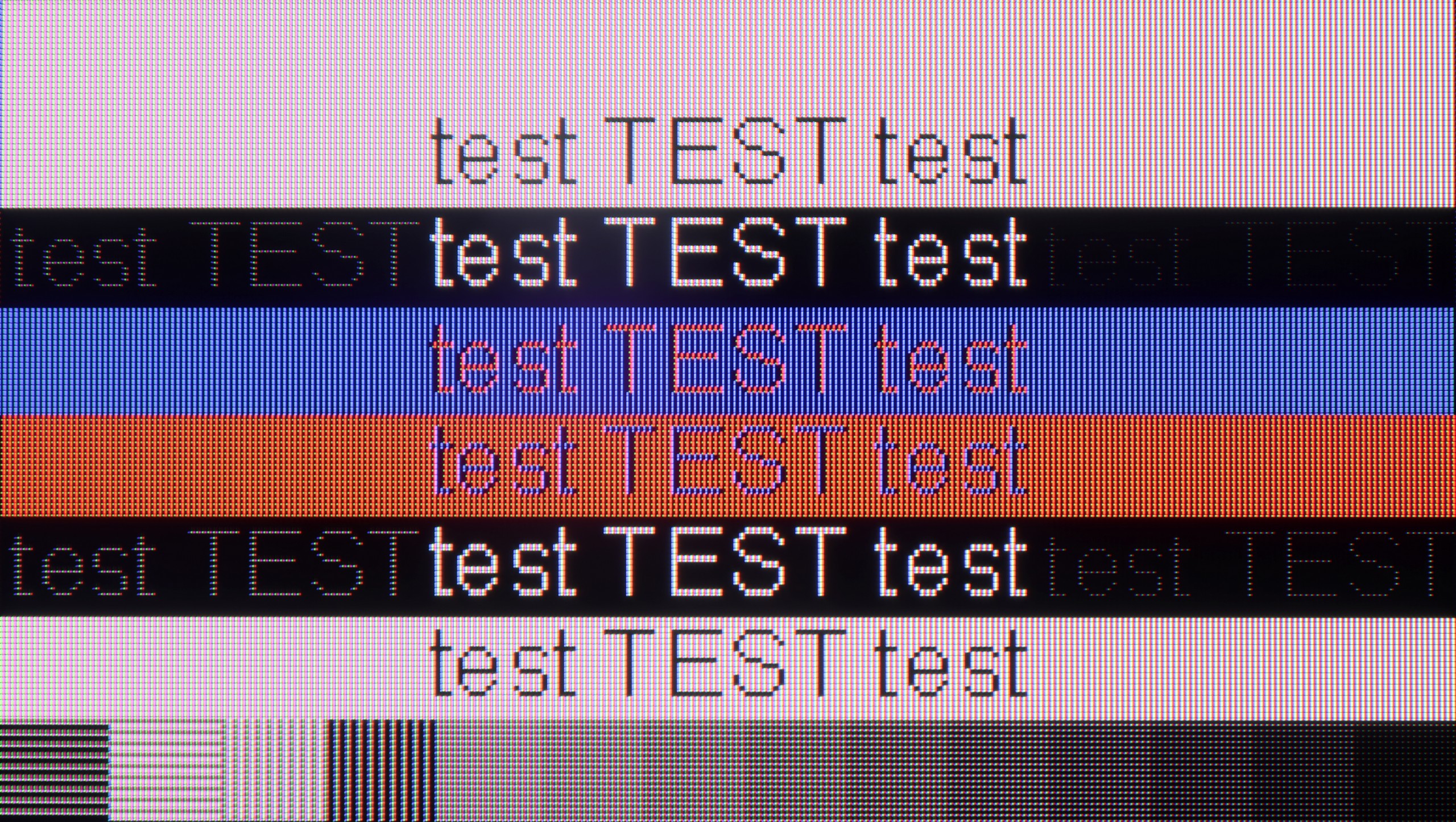
Xiaomi A Pro 2026 as a computer monitor? There's no point beating around the bush – it's very bad. While the 120 Hz mode can still be used in games at lower resolutions, for daily work the television is completely unsuitable. There's a lack of full support for chroma 4:4:4, meaning fonts are blurred and sometimes even rainbow-like. Additionally, there's significant dithering, causing the image to appear uneven – some pixels shine brighter, others dimmer, and vertical lines can even break apart. In practice, this means that text (especially coloured and on a dark background) becomes hard to read. Light text manages to hold up somewhat, but it’s hard to talk about any comfort here. In this category, we give the Xiaomi A Pro 2026 a score of 2/10 (+1 for the additional high refresh rate mode), and there’s really no point in dwelling on this further.
Generally, when it comes to gaming, the S Pro 2026 is a fantastic screen for PC owners. It offers a refresh rate of up to 288 Hz at Full HD resolution or a full 144 Hz at 4K. All of this, supported by technologies such as AMD FreeSync or G-Sync, really caters to very demanding gamers. And what about "desktop" work? Here we have good news. Although the displayed font may not be perfectly sharp (like on a dedicated PC monitor with an IPS panel), it is presented in a really pleasant and readable manner. This is due to the proper implementation of Chroma 4:4:4 sampling, which ensures that text is clear and there are no issues with coloured fringes.
Viewing angles
3/10
3.7/10
Xiaomi A Pro 2026 uses a VA panel, which immediately suggests that viewing angles are not its strong suit. When looking at the screen from the side, we quickly notice a loss of quality – colours noticeably fade, and the whole image appears washed out. The drop in brightness may not be as drastic as in some constructions based on similar technology, but that does not change the fact that this is clearly a weak point of this model. If we plan to use it as a large, cheap screen for the living room, we need to reckon with this limitation.
As for a television equipped with a VA panel, we must admit that the decrease in brightness when deviating from the screen's axis is relatively small in the Xiaomi S Pro 2026. However, one must remember the second, crucial aspect – colour saturation significantly degrades at angles. This is typical behaviour for televisions with VA panels that do not have additional coatings to widen viewing angles. Is this a downside of this television? Probably not. It's simply a characteristic, the price we have to pay for the key qualities of a VA panel in the form of its high native contrast.
Daytime performance
4.9/10
7.4/10




Panel brightness
Average luminance SDR
Xiaomi S Pro 2026: 771 cd/m2
XIAOMI A PRO 2026: 334 cd/m2
Xiaomi A Pro 2026 performs quite well during the day. The display has a satin coating that manages to dull reflections somewhat, so the colours do not lose their vibrancy, even when the room is bright. Just remember that it is not an extremely bright screen – the average brightness is around 350 nits. In a typical, moderately sunlit living room, it is sufficient, but if you have large windows and plenty of sunshine coming in, it might simply be difficult without blinds or curtains.
Due to its very high peak brightness, the Xiaomi S Pro 2026 performs exceptionally well in brightly lit rooms. In most scenarios, it is capable of "cutting through" even very strong room lighting. However, it should be noted that the matrix used here averages out in terms of reflecting light. This means that in darker areas of the image, or when the television is displaying a dark scene, direct reflections (e.g. the reflection of a window or lamp) may be annoying. Nevertheless, the S Pro 2026, as a television for a bright living room, will perform very well indeed, thanks to its tremendous brightness.
Panel details
Subpixel Structure:
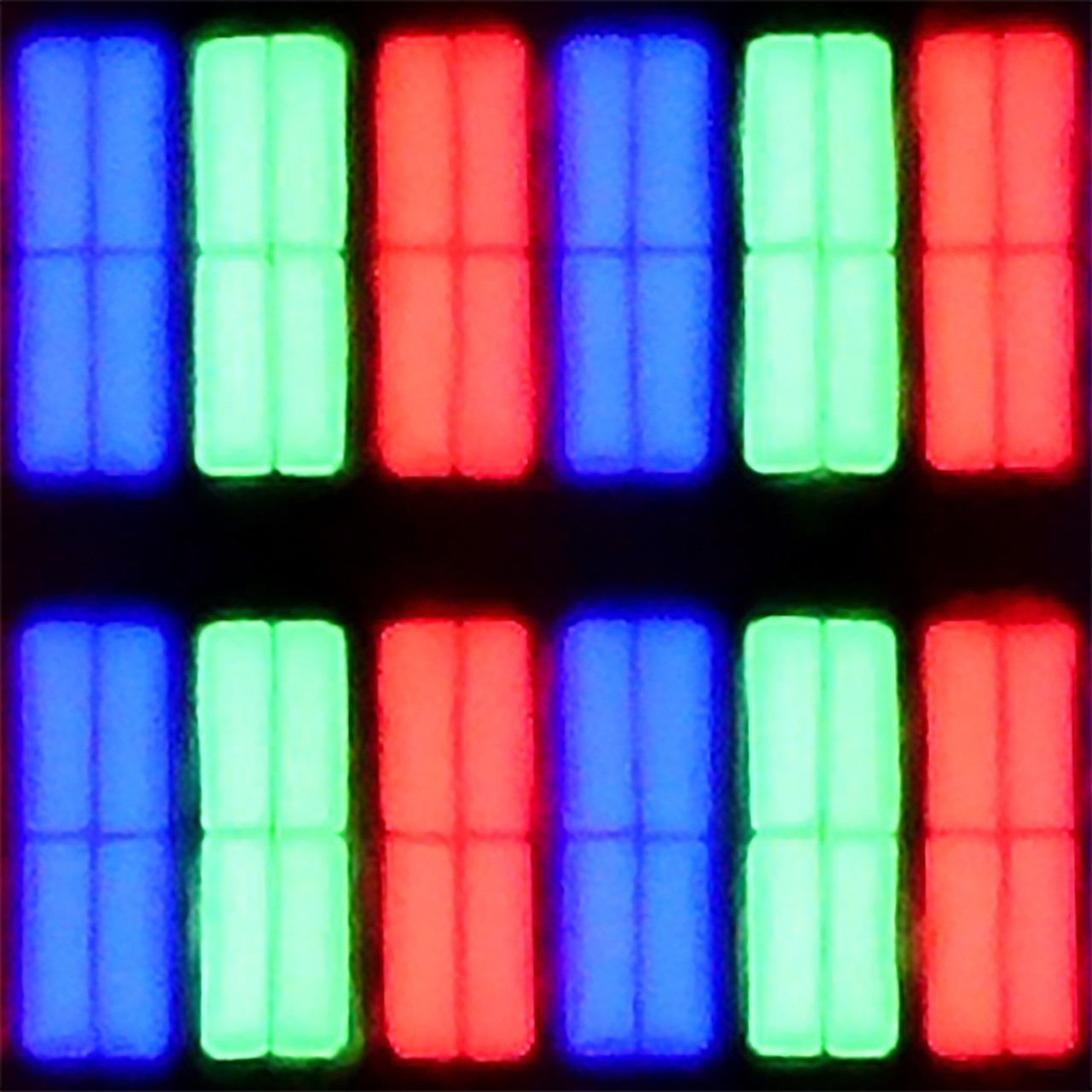
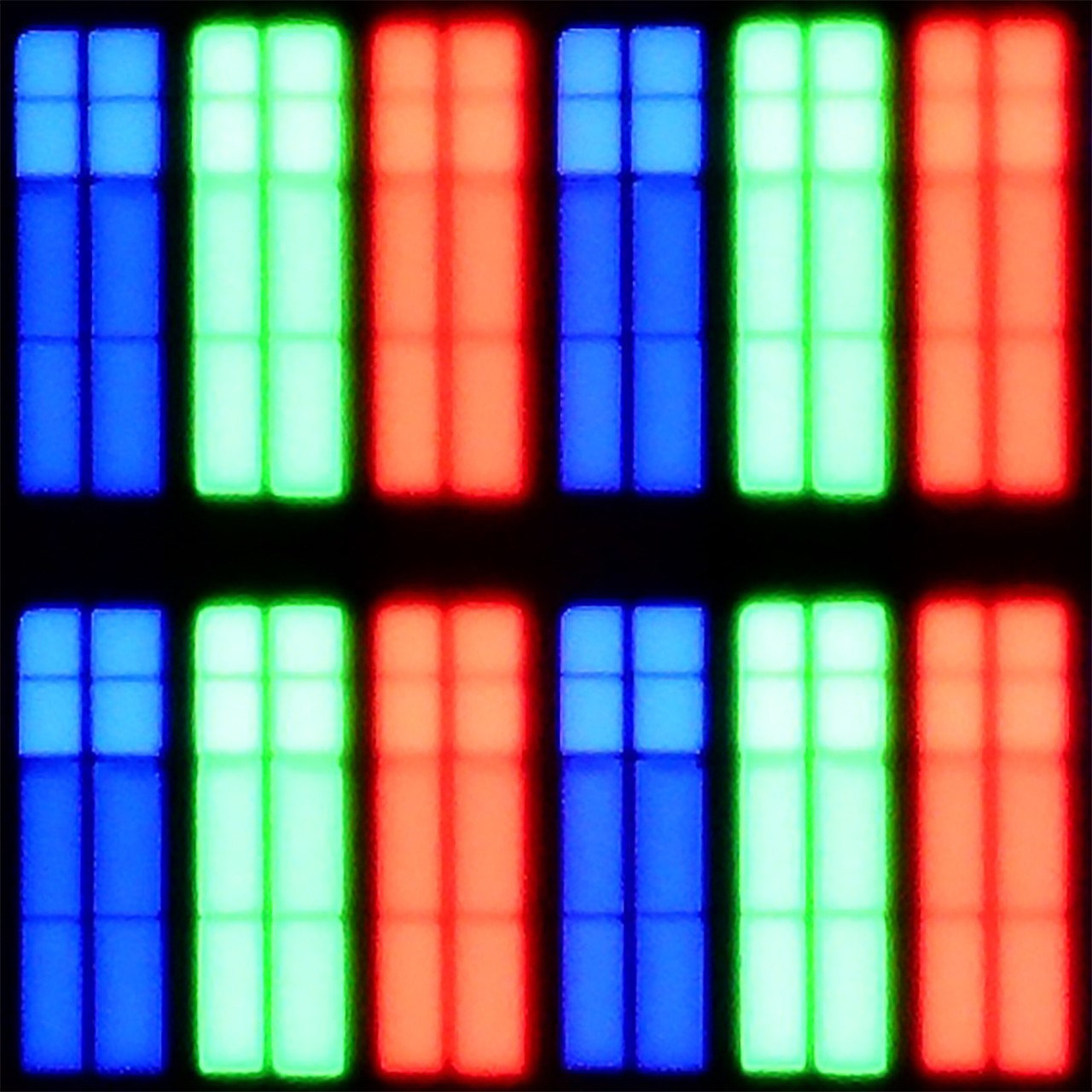
Panel uniformity and thermal imaging:




XIAOMI A PRO 2026
Xiaomi S Pro 2026
TV features
6.1/10
7.2/10
- HDMI inputs3 x HDMI 2.0, 0 x HDMI 2.11 x HDMI 2.0, 2 x HDMI 2.1 48Gbps
- Other inputsRCA (Chinch)
- OutputsToslink (Optical audio), eARC (HDMI), ARC (HDMI), Mini-Jack (Headphones)Toslink (Optical audio), eARC (HDMI), ARC (HDMI), Mini-Jack (Headphones)
- Network InterfacesWi-Fi 2.4GHz, Wi-Fi 5GHz, Ethernet (LAN) 100MbpsWi-Fi 2.4GHz, Wi-Fi 5GHz, Ethernet (LAN) 100Mbps
- TV receptionDVB-T, DVB-T2, DVB-S, DVB-S2, DVB-CDVB-T, DVB-T2, DVB-S, DVB-S2, DVB-C
Classic features:
- Recording to USB (terrestrial TV)
- Recording programming
- Picture in Picture (PiP)
- RF remote control (no need to aim at the screen)
- Backlit remote control
- Teletext
- Audio only mode
- Bluetooth headphones support
- Simultaneous Bluetooth headphones & TV audio
Smart features:
- AirPlay
- Screen mirroring (Windows Miracast)
- Voice search
- Voice search in native language
- Ability to connect a keyboard and mouse
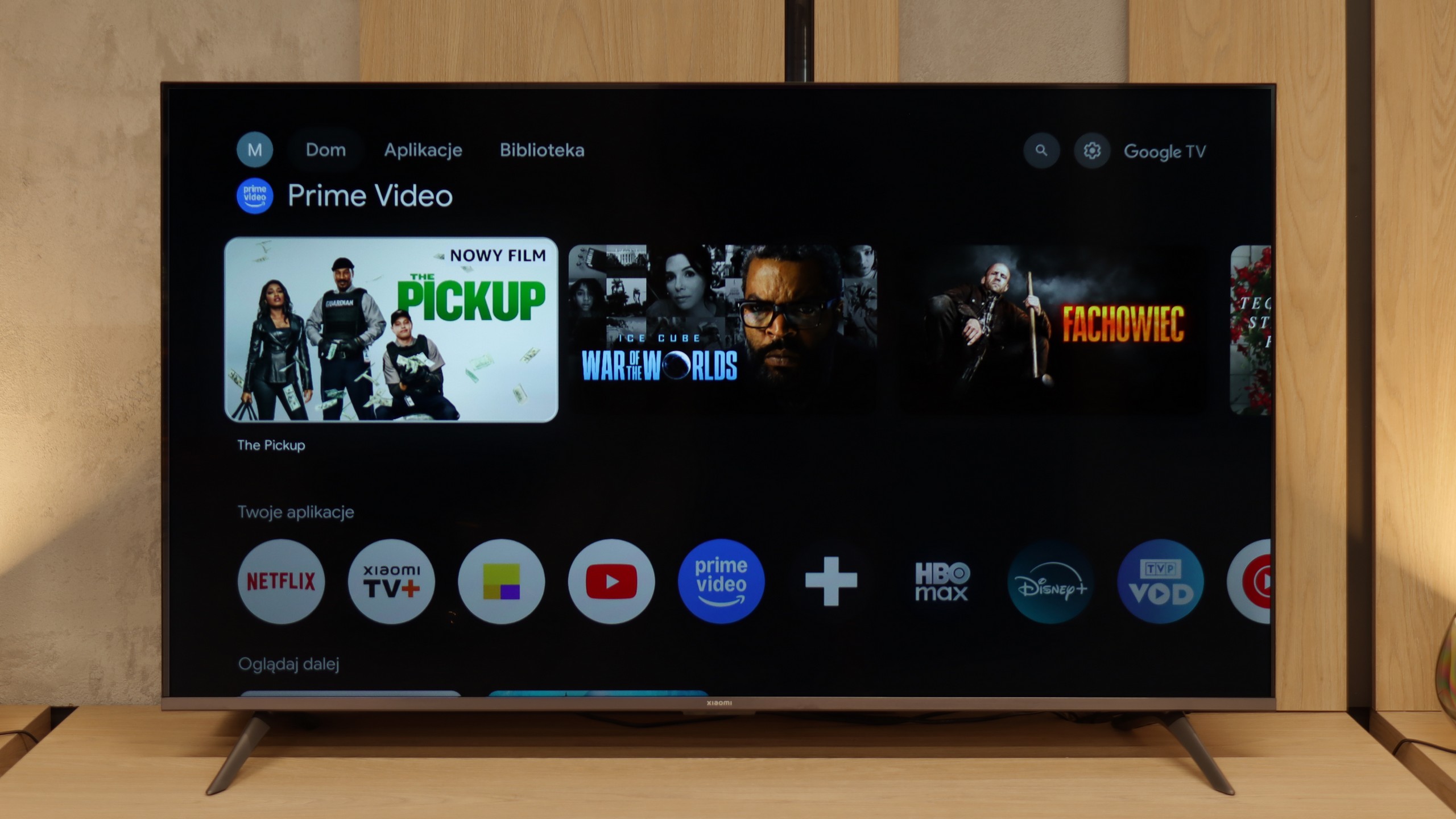
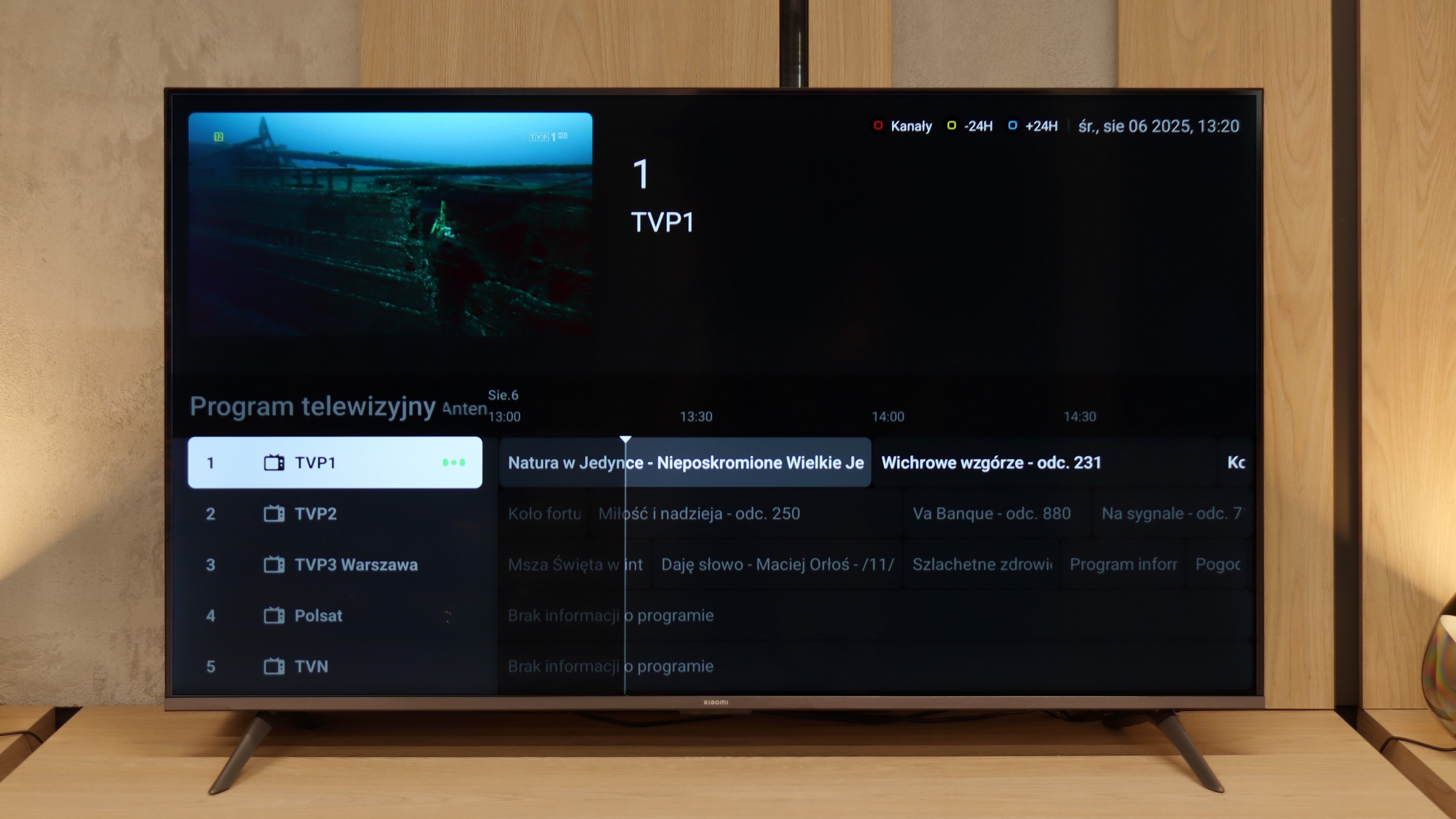
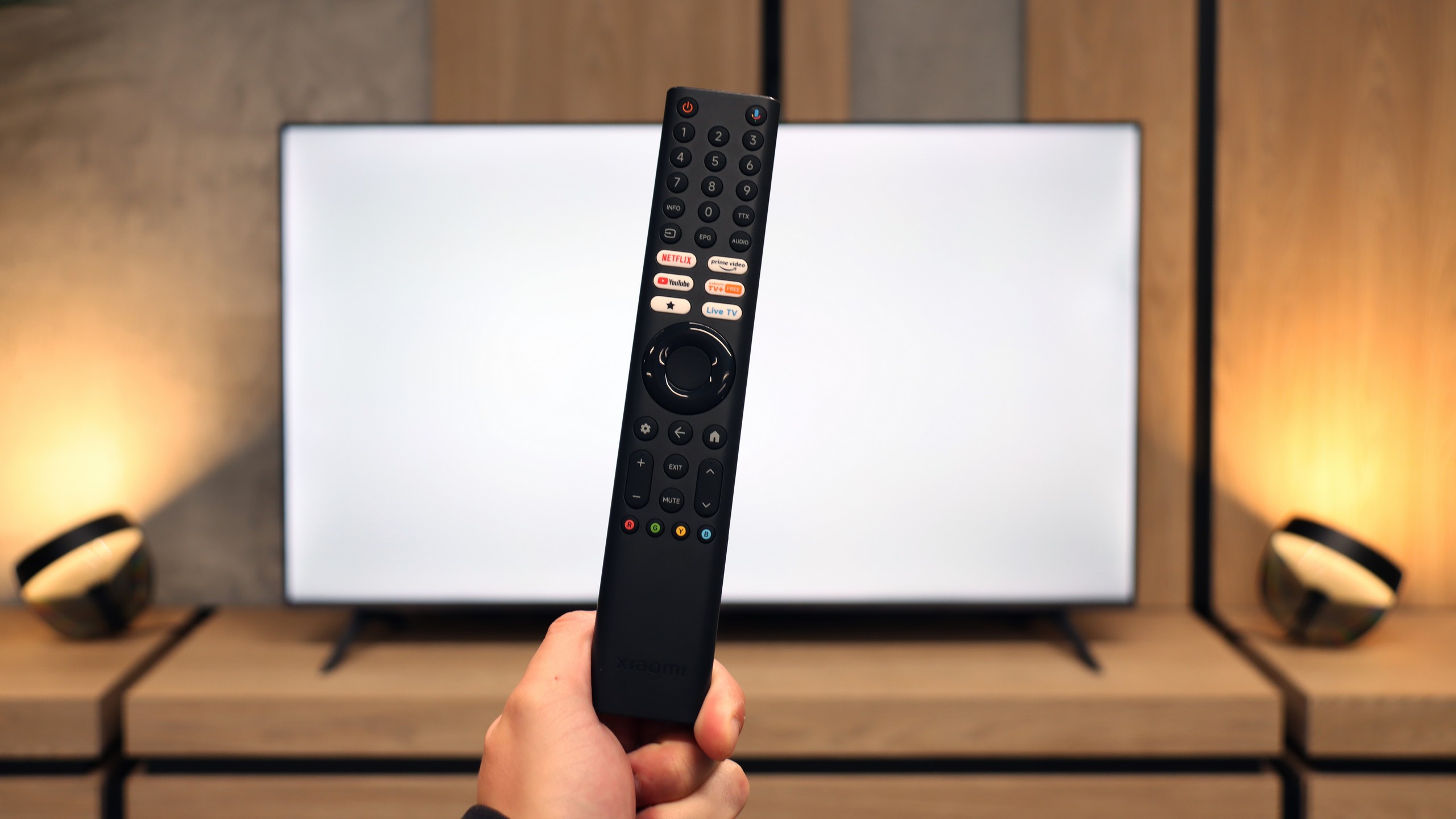
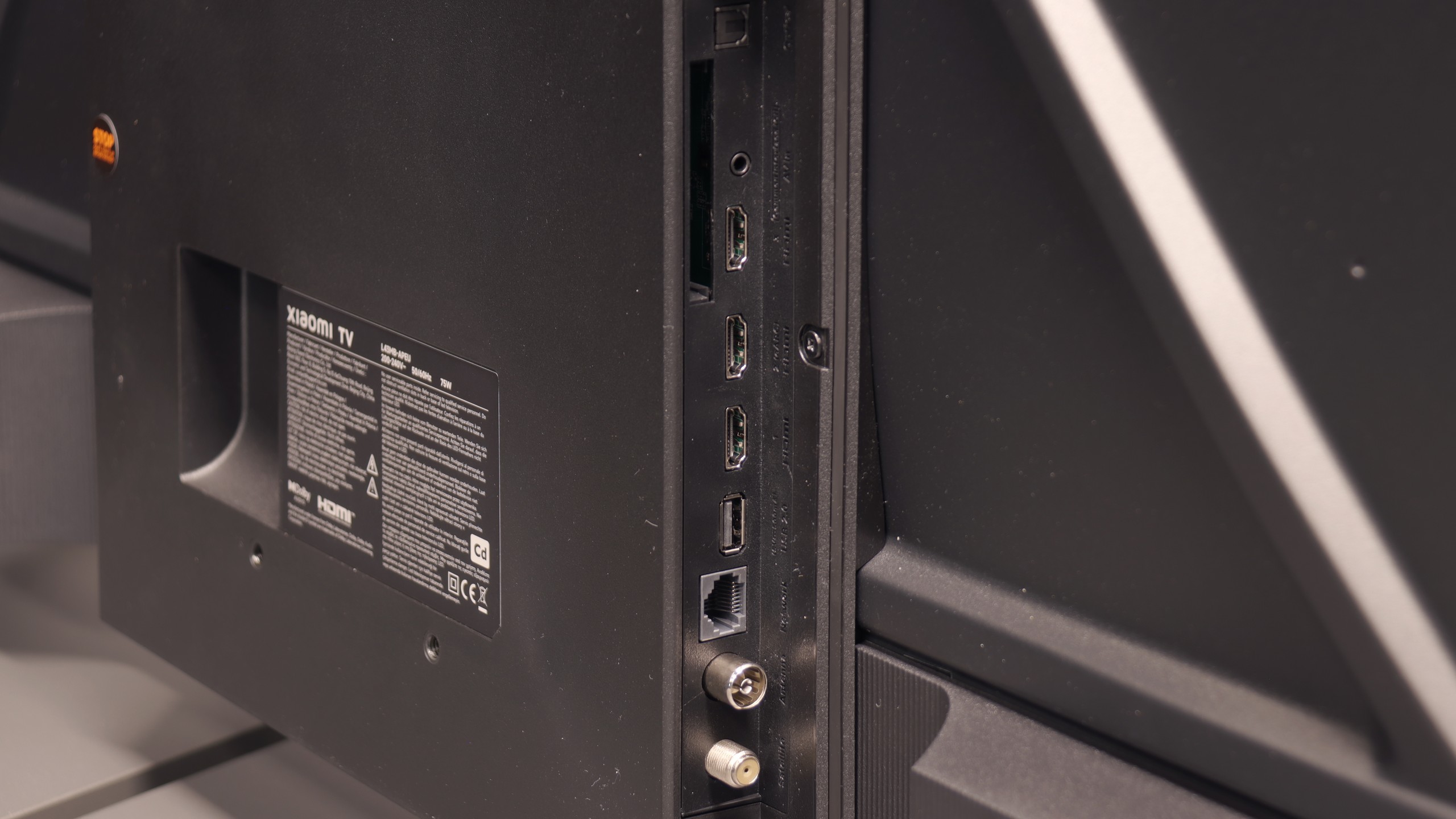
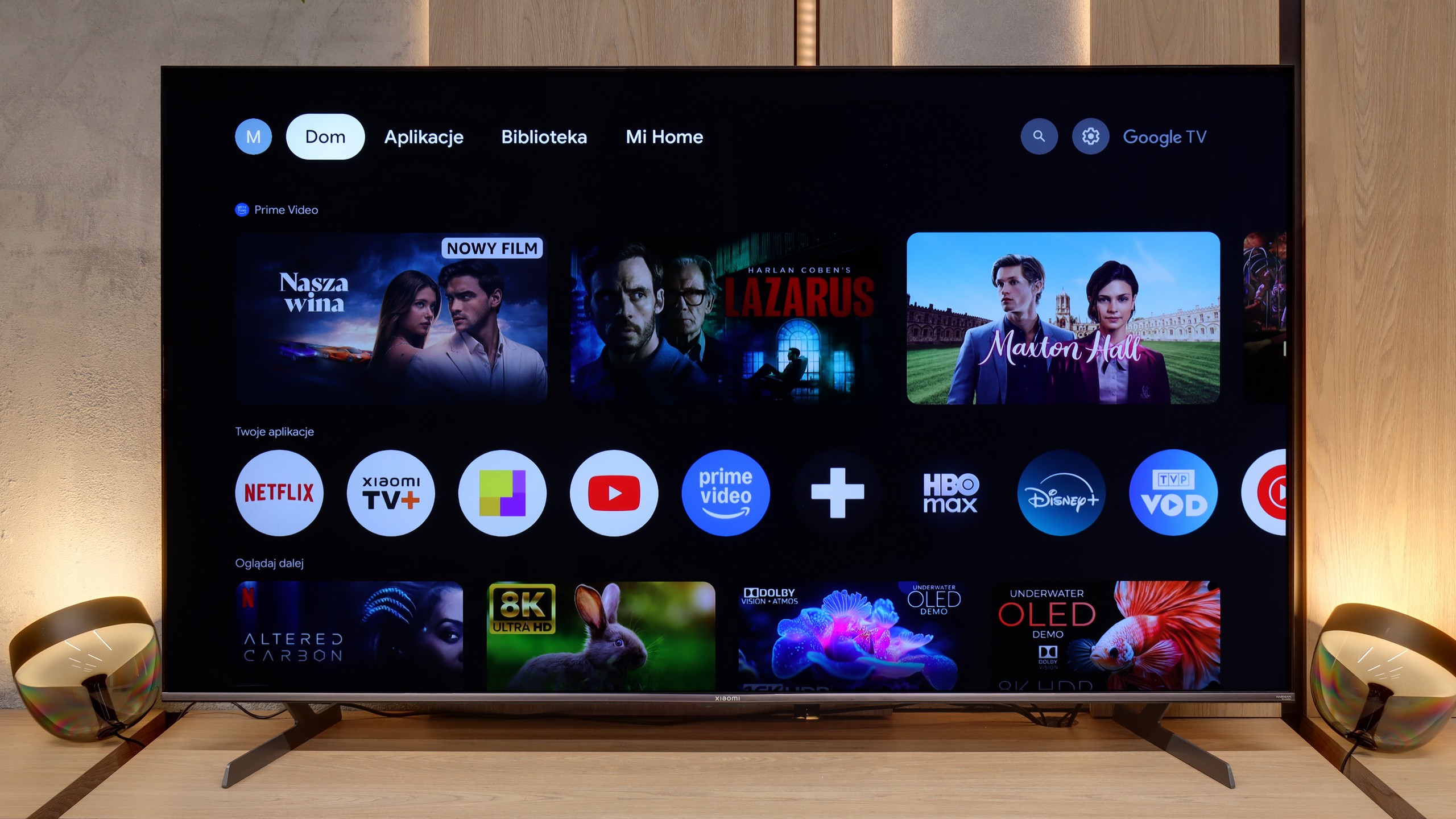
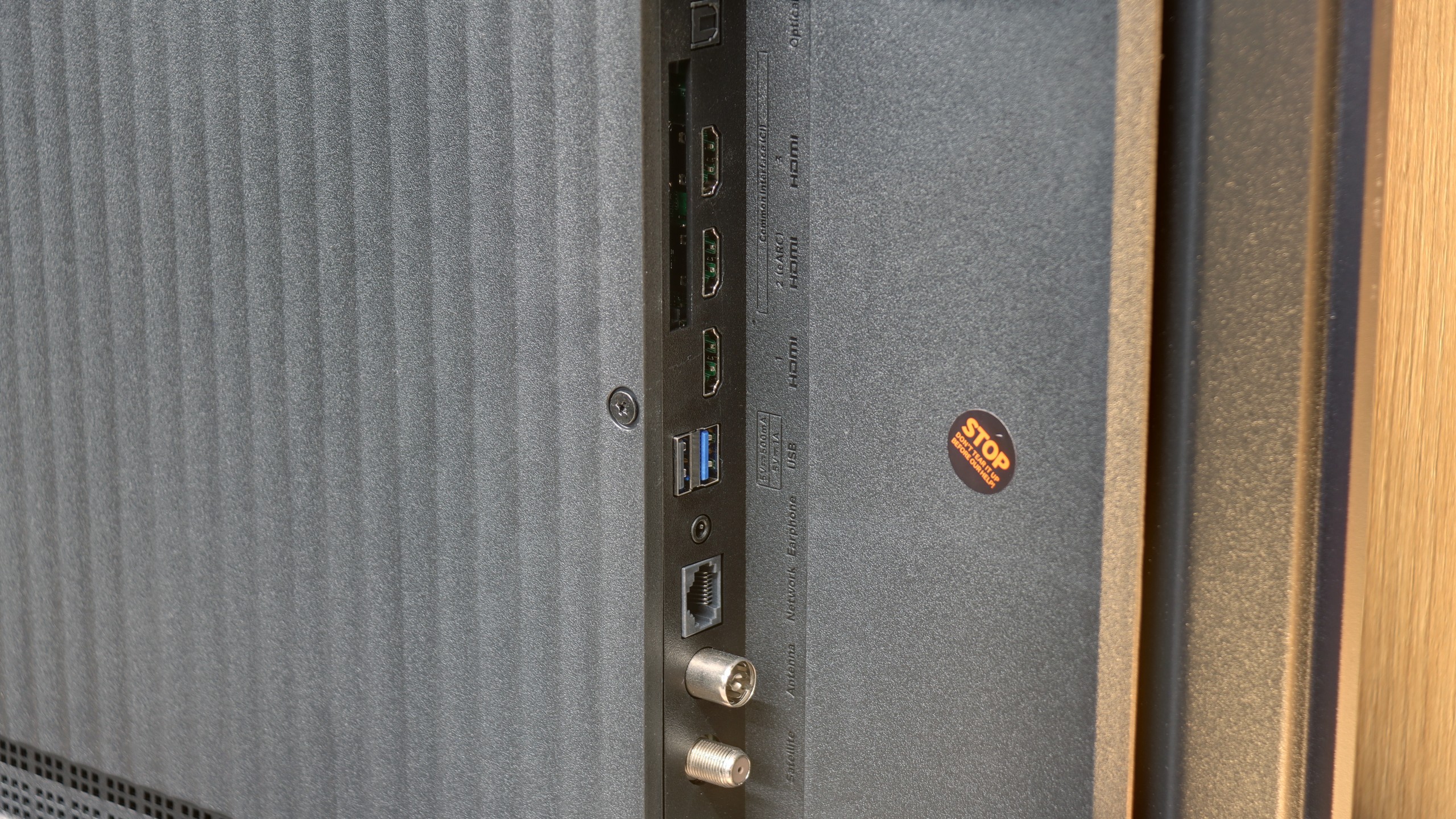

SmartTV - Google TV
The biggest advantage of the Xiaomi A Pro 2026 is the Google TV system. It is what gives the television a second life – you can run practically any application on it, from Netflix and YouTube to music services and lesser-known programmes from the Google Play Store. We are not limited to what the manufacturer has pre-installed, as is the case with other budget televisions. Additionally, we have AirPlay, voice search via Google Assistant, and even integration with Gemini. We did encounter a few minor hiccups – for example, streaming from a laptop did not always want to work – but despite these shortcomings, Google TV is a huge plus in this setup.
Classic TV Functions
The Xiaomi A Pro 2026 can be termed a 'senior-friendly' television. The large remote control with a numerical keypad and a considerable number of physical buttons makes it intuitive to operate. Support for teletext and a clear EPG interface facilitate the use of classic television functions. We will not find many advanced features such as USB recording or the PiP function, but the presence of an analogue headphone jack output can be surprisingly practical for some users. It gives the impression of a set of features tailored to the needs of the most traditional viewers.
System Stability
However, not everything works as it should. During testing, we encountered irritating system lags, problems with Miracast, and issues when switching audio sources. There were even instances where it was necessary to reset the television by disconnecting it from the power supply. This simply shows that although Google TV offers huge possibilities, the stability in such a budget-friendly construct can still be quite problematic.
Operating System (Google TV)
The enormous advantage of the Xiaomi S Pro 2026 is undoubtedly the presence of the Google TV system. This gives us access to a gigantic library of applications – we can find literally everything here, from leading VOD platforms to niche players. The system also offers a plethora of useful features, such as a built-in Chromecast, support for AirPlay and Screen Mirroring, as well as an efficiently functioning voice search. The Google TV system itself is great, but one must take a slight grain of salt with its implementation by Xiaomi. During our tests, it occasionally exhibited what could be described as a "breathlessness." Animations could stutter slightly, and the response to commands was not immediate. This is certainly not the level of fluidity that we are accustomed to with top-tier, significantly more expensive models equipped with more powerful processors.
Television Features and Connectivity
How does the S Pro 2026 perform as a "regular" television? Unfortunately, here we have less good news. In terms of traditional television viewing, we can only commend this model mainly for having a convenient remote control with a numeric keypad – which (surprisingly) is not a standard today. However, this is where the conveniences end. We will not find either USB recording functionality (PVR) or a PiP (Picture-in-Picture) option. On the plus side, we appreciate the extensive Bluetooth connectivity options. We were able to connect external devices to the television, such as wireless headphones, a keyboard, or a mouse, without any issues, which significantly simplifies operation.
Playing files from USB
6.8/10
6.8/10
Supported photo formats:
Maximum photo resolution:
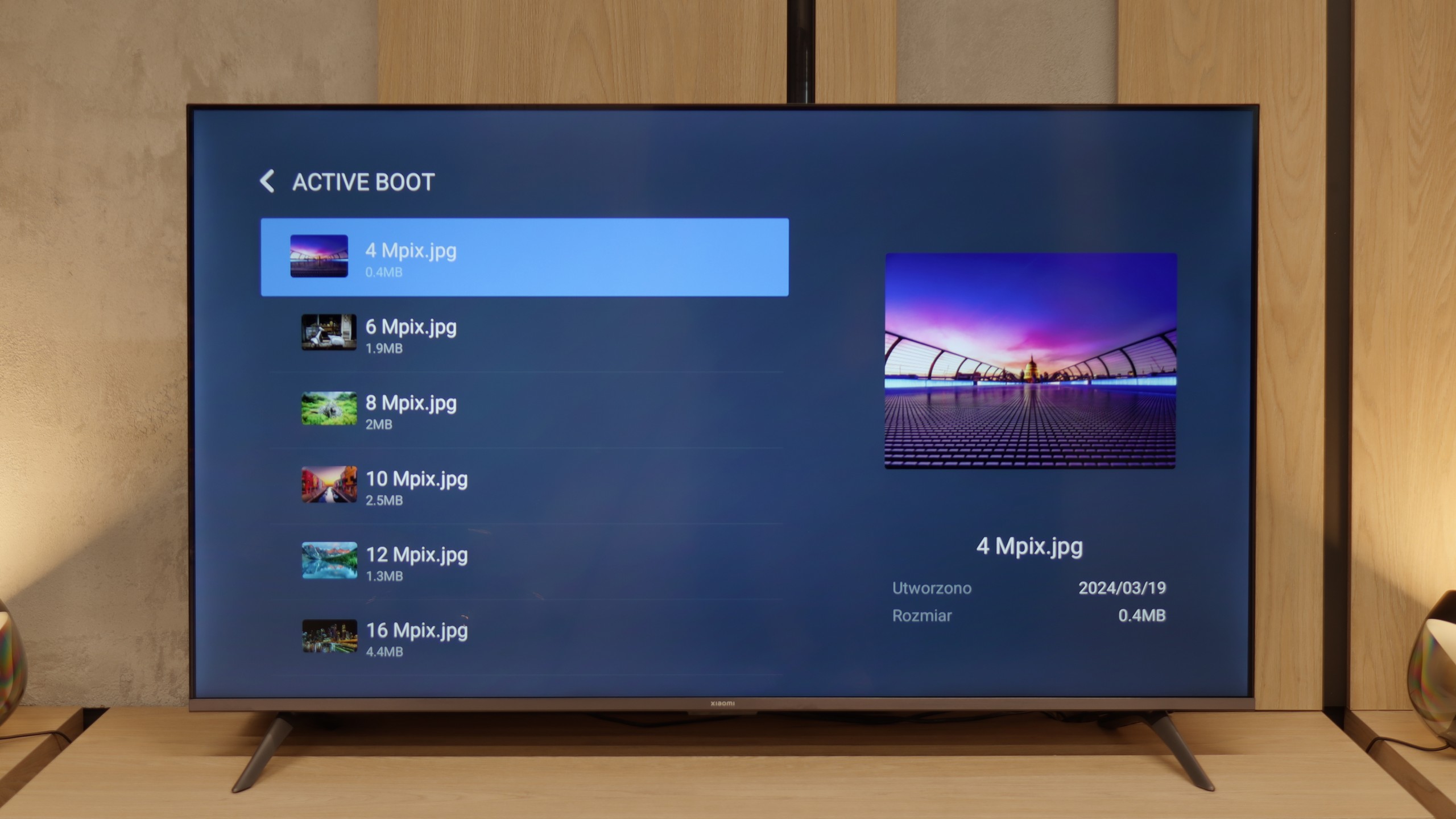

The built-in media player in the Xiaomi A Pro 2026 is a real enigma. On one hand, it plays most popular audio and video formats without major issues. On the other hand, it can struggle with basic things like Polish characters. Files with letters such as ą, ł, ć or ś in their names often refuse to open or are displayed incorrectly. This looks strange, as we seemingly have codec support, yet the television simply gets lost on simple matters related to the alphabet. Fortunately, this is not a huge problem, as thanks to Google TV we can simply install another player, e.g. VLC. Then the issue with Polish characters disappears completely, and using multimedia becomes hassle-free.
The built-in, default media player in the Xiaomi S Pro 2026 is – given the capabilities of the Google TV system – simply weak. Its biggest drawback is the fact that it does not support characters other than those from the standard alphabet. As a result, it does not display, among others, Polish fonts in subtitles or file names. Fortunately, as we have already mentioned, the heart of the television is Google TV. This system allows for the quick installation of an external, significantly better player, such as VLC or Kodi. For this television, we recommend installing an alternative player immediately after the first start-up.
Apps
9.6/10
9.6/10














































Sound
5/10
7.1/10
- Maximum volume81dB82dB
- Dolby Digital Plus 7.1
- Dolby True HD 7.1
- Dolby Atmos in Dolby Digital Plus (JOC)
- Dolby Atmos in Dolby True HD
- DTS:X in DTS-HD MA
- DTS-HD Master Audio
Last year, the Xiaomi A Pro 2025 surprised us with really decent sound, considering it is a super budget television. Unfortunately, this year's edition – the A Pro 2026, has let us down across the board. The sound resembles the sensation of the equipment playing from underwater: flat, devoid of any bass or depth. The only upside remains the wide support for audio formats, such as Dolby Atmos or DTS:X, but in practice, it changes very little. If you are considering this television, you must immediately factor in a soundbar, as without it the audio experience will be quite disappointing.
We have to admit that the S Pro 2026 has pleasantly surprised us. The television is equipped with a 30W speaker system, which, for its class, sounds really very good. There is even a noticeable hint of bass, and the mid and high tones are quite well balanced. Of course, all of this is within the capabilities of what the television's speakers can deliver, yet it is a level we did not expect from such a relatively inexpensive model. A huge plus is also the support for top audio technologies. The television is capable of decoding not only the very popular Dolby Atmos format but also the recently quite rarely seen DTS:X, which we mainly find on Blu-ray discs.
Sound Quality Test
No sound test video
Acoustic Measurements
81dBC (Max)
75dBC
82dBC (Max)
75dBC
